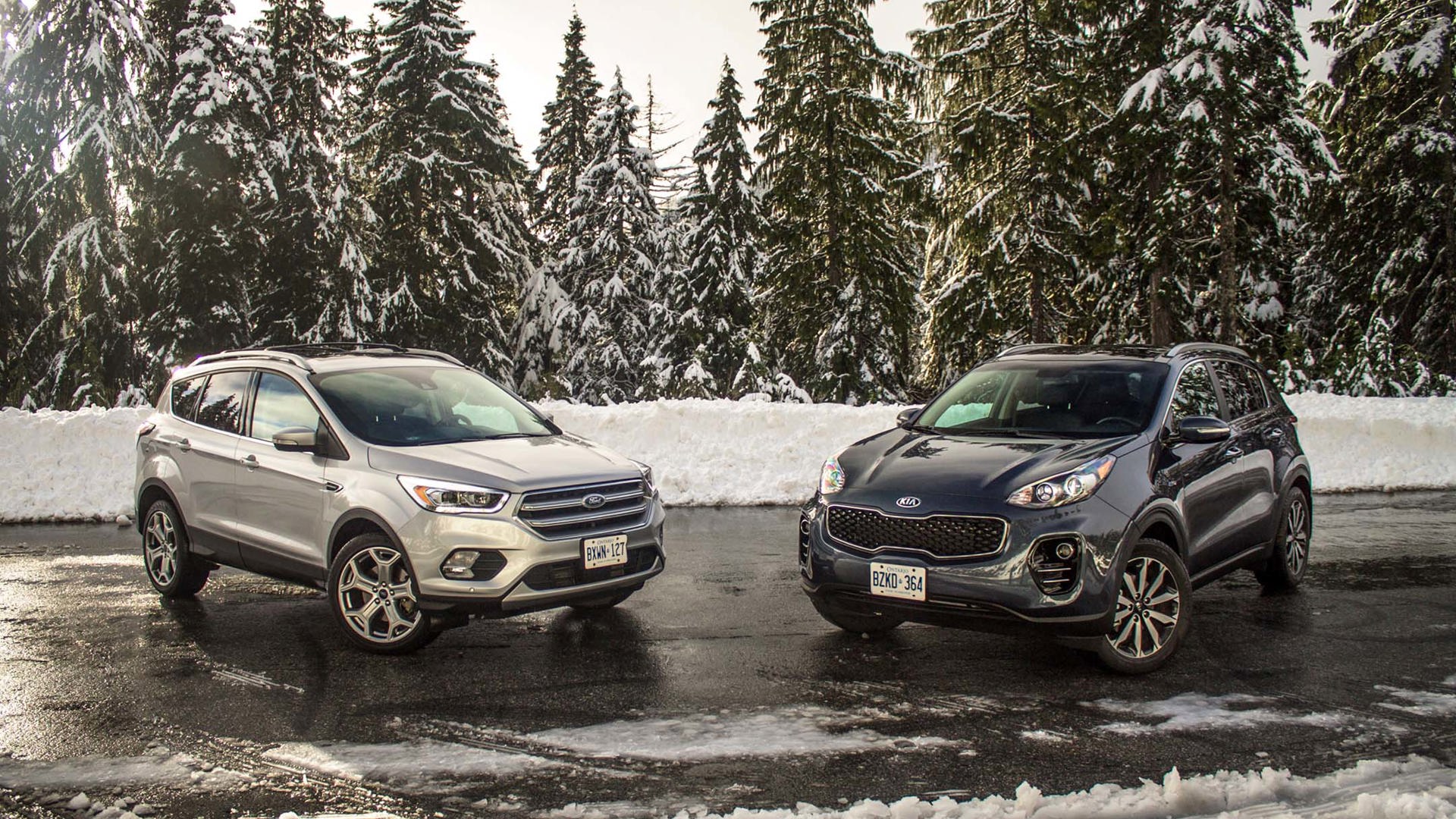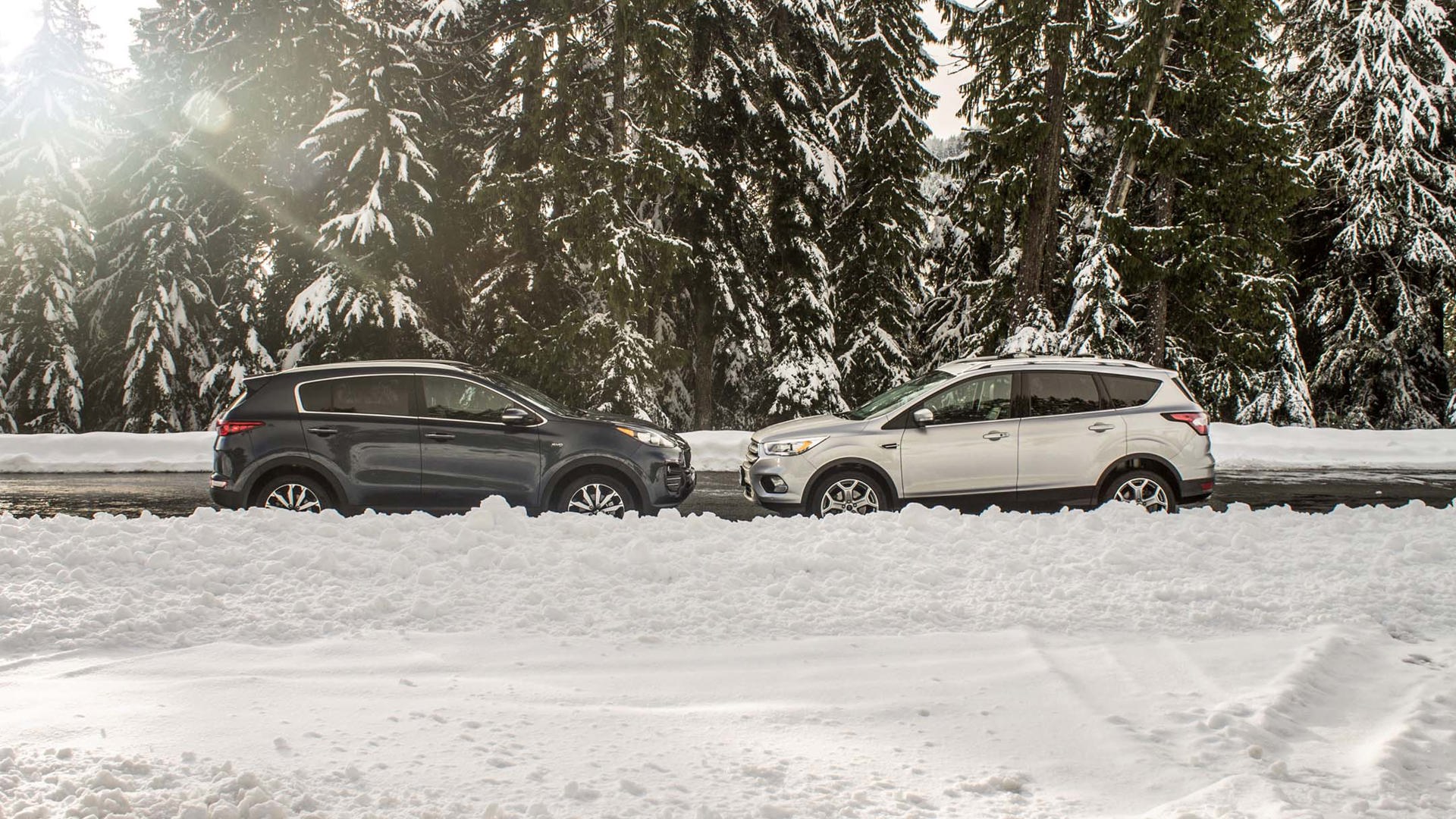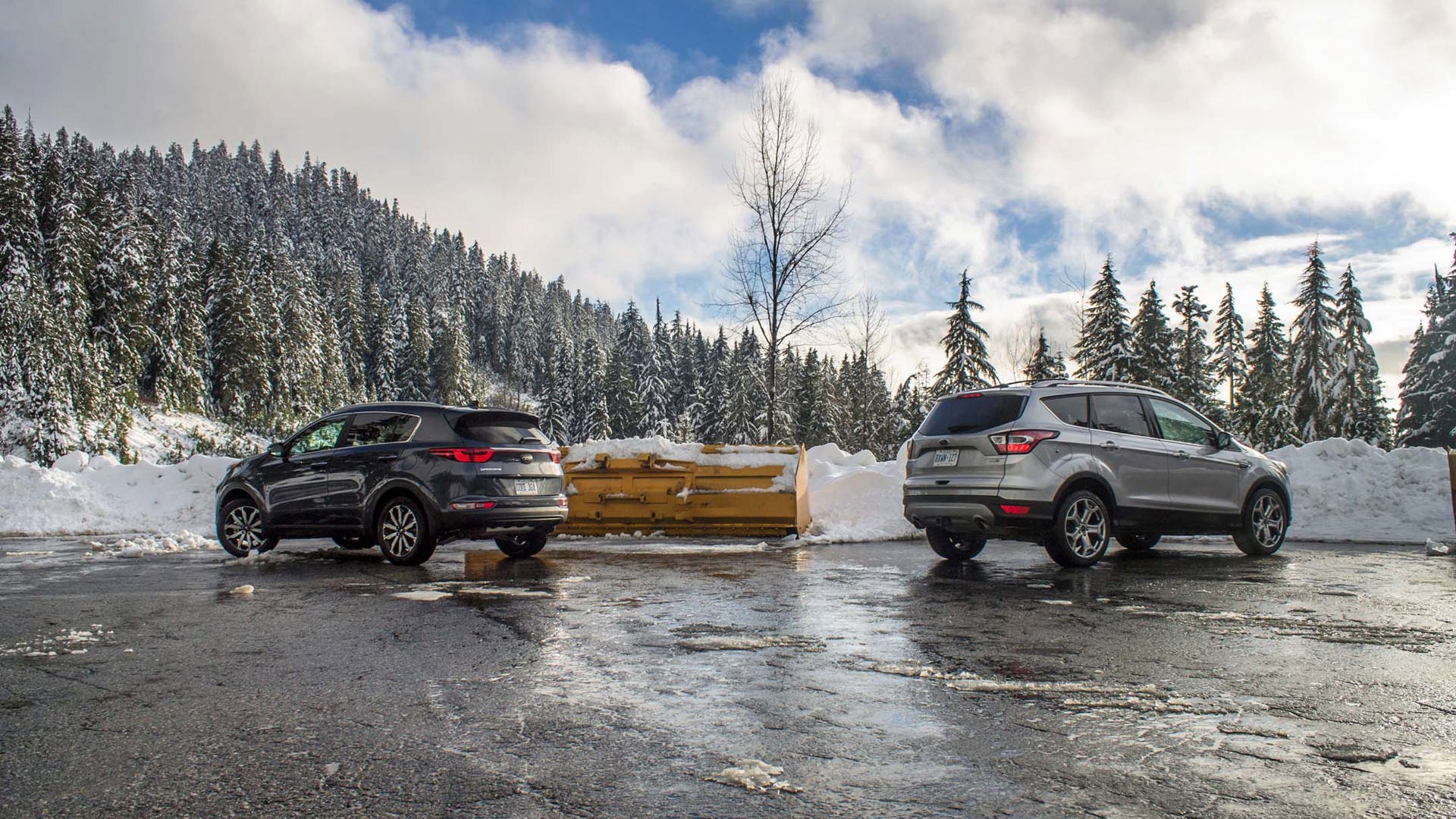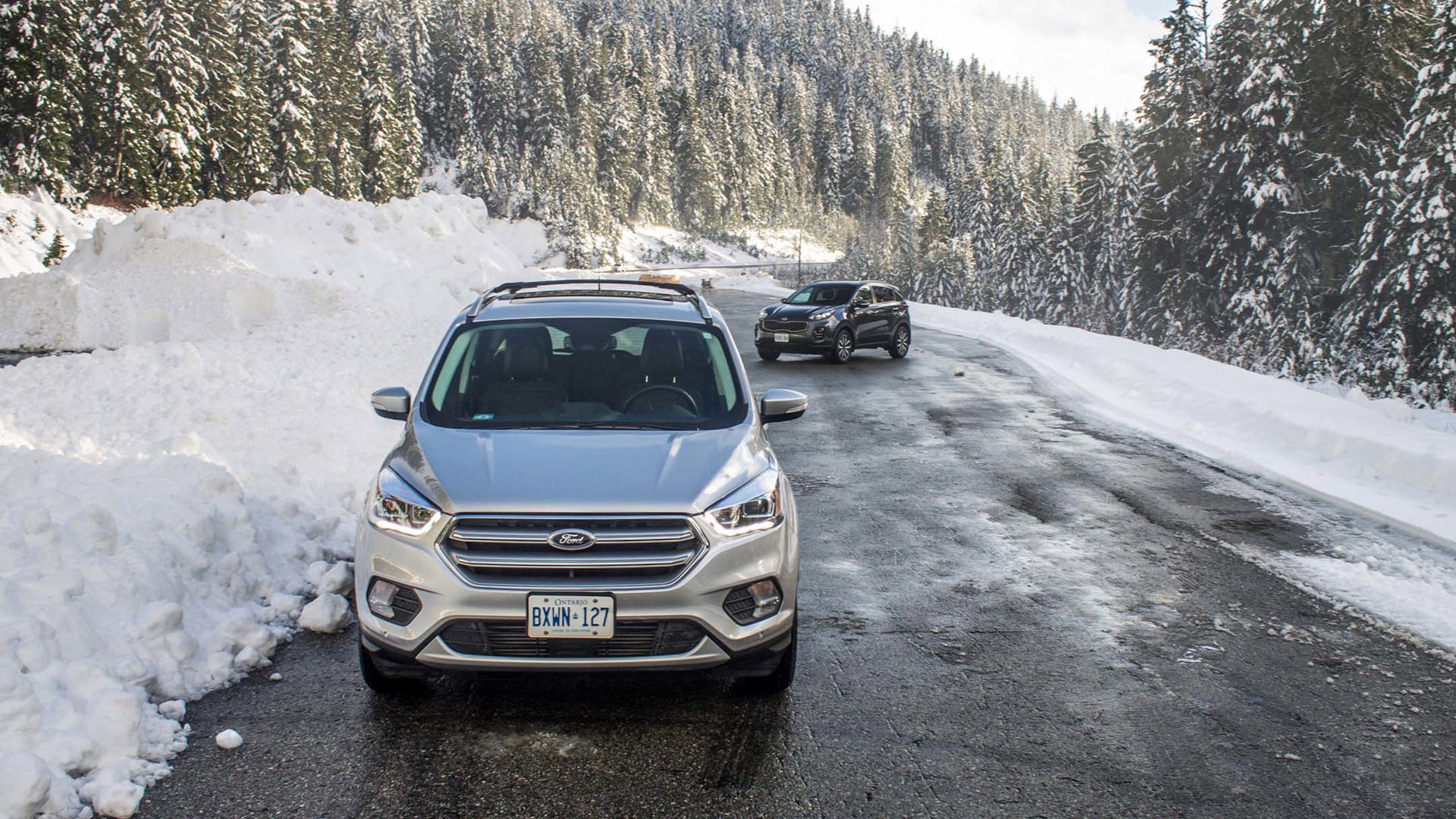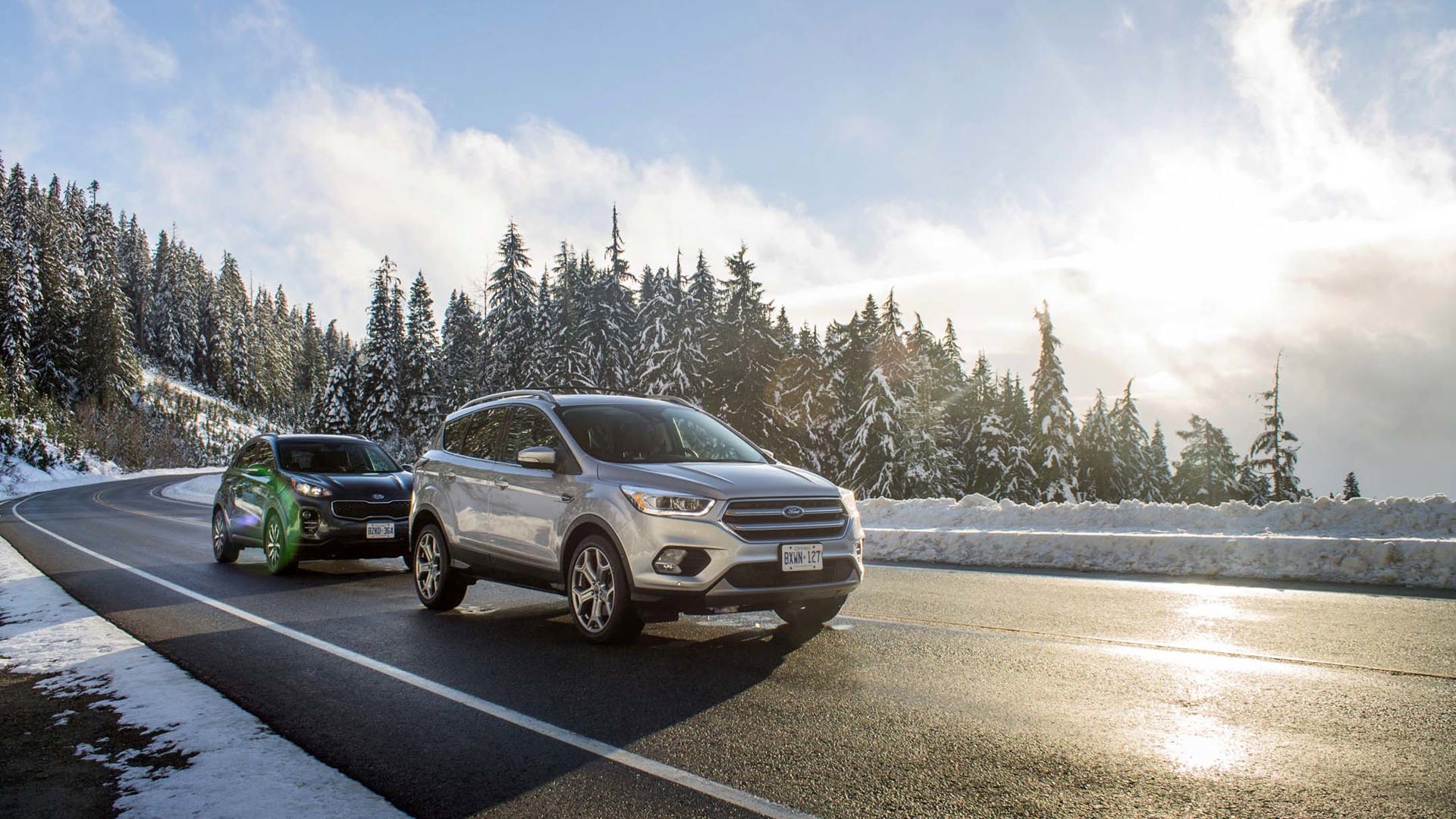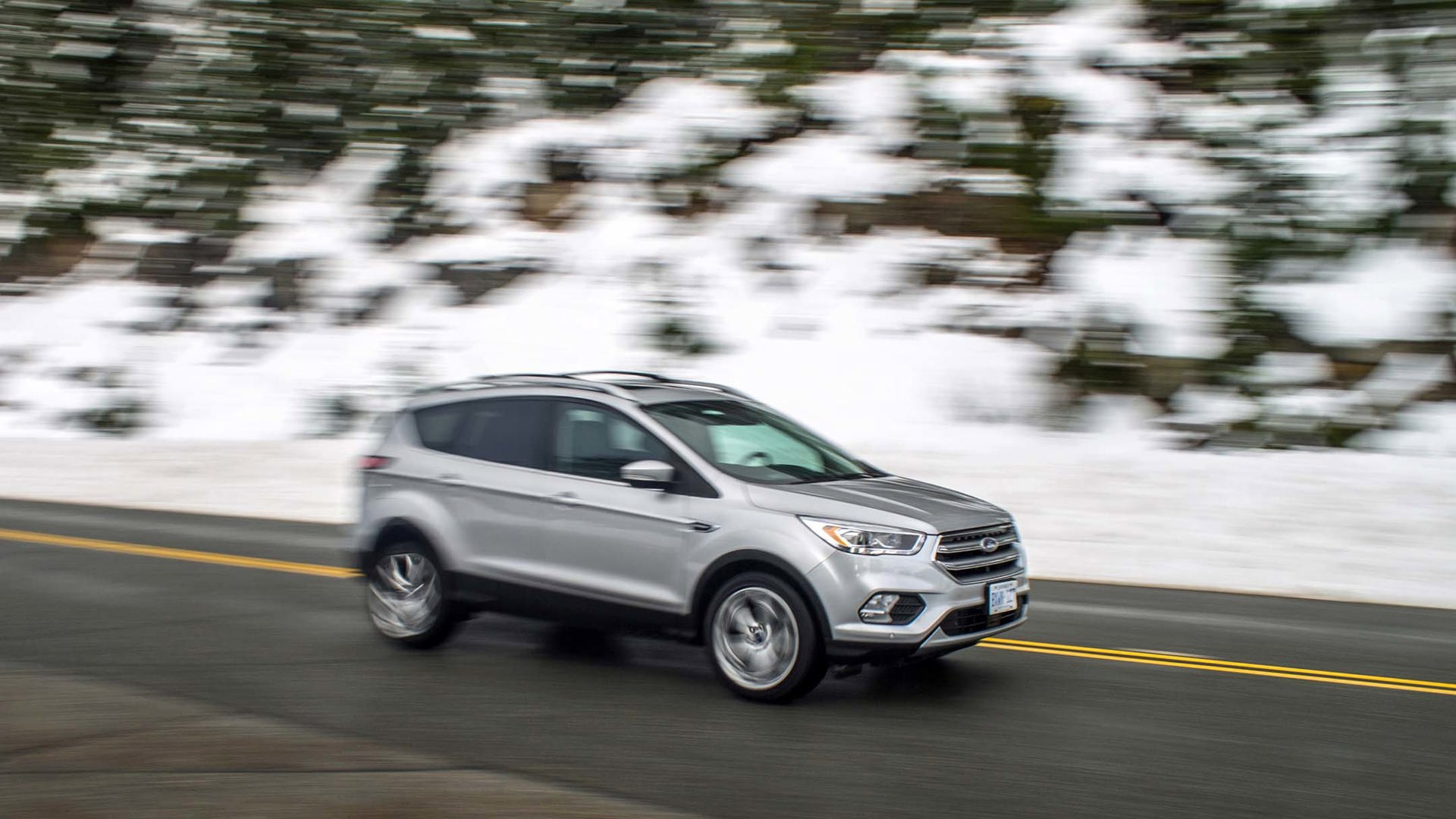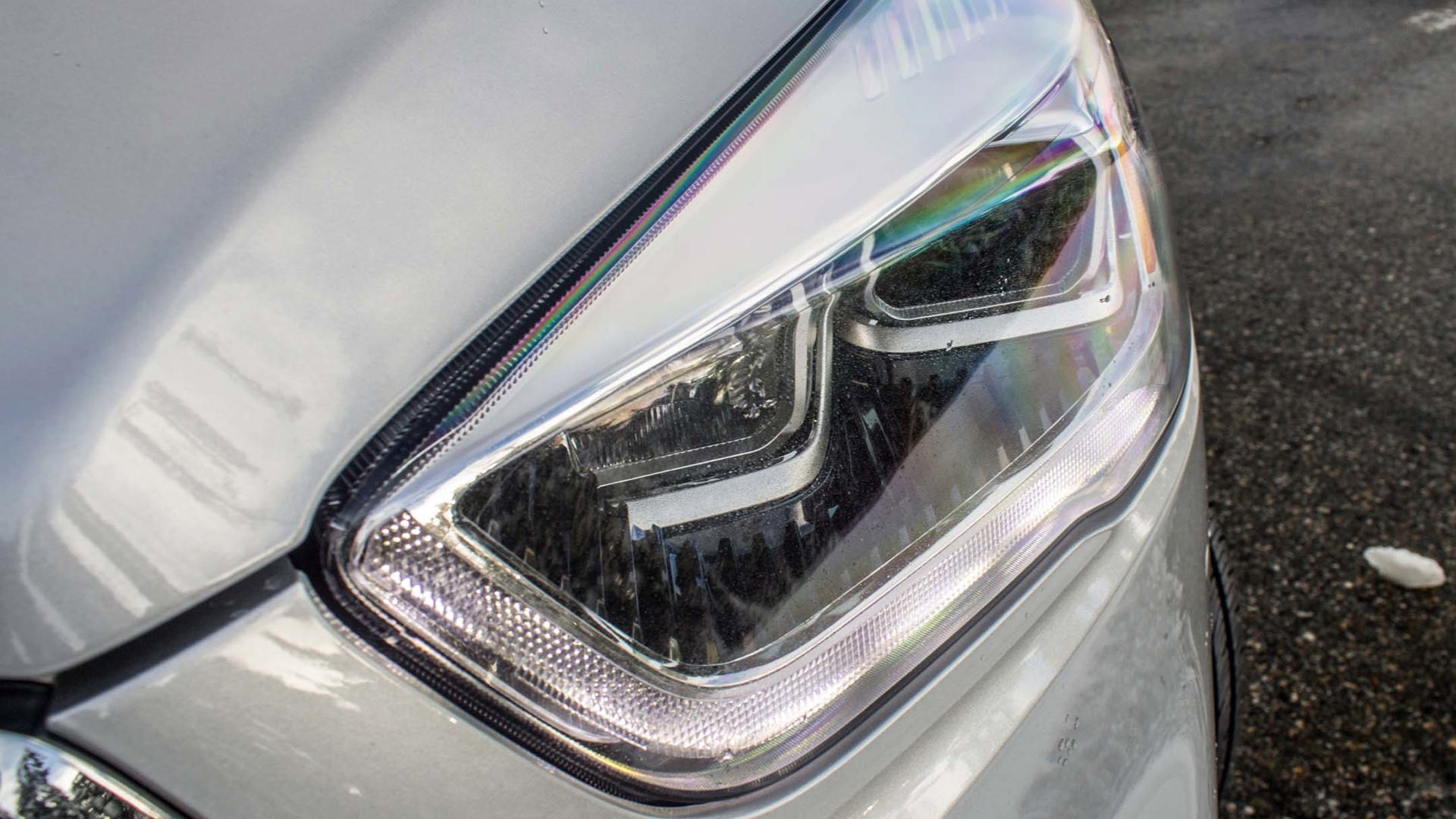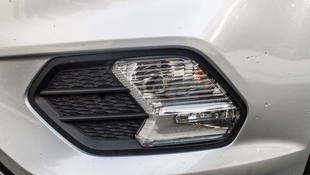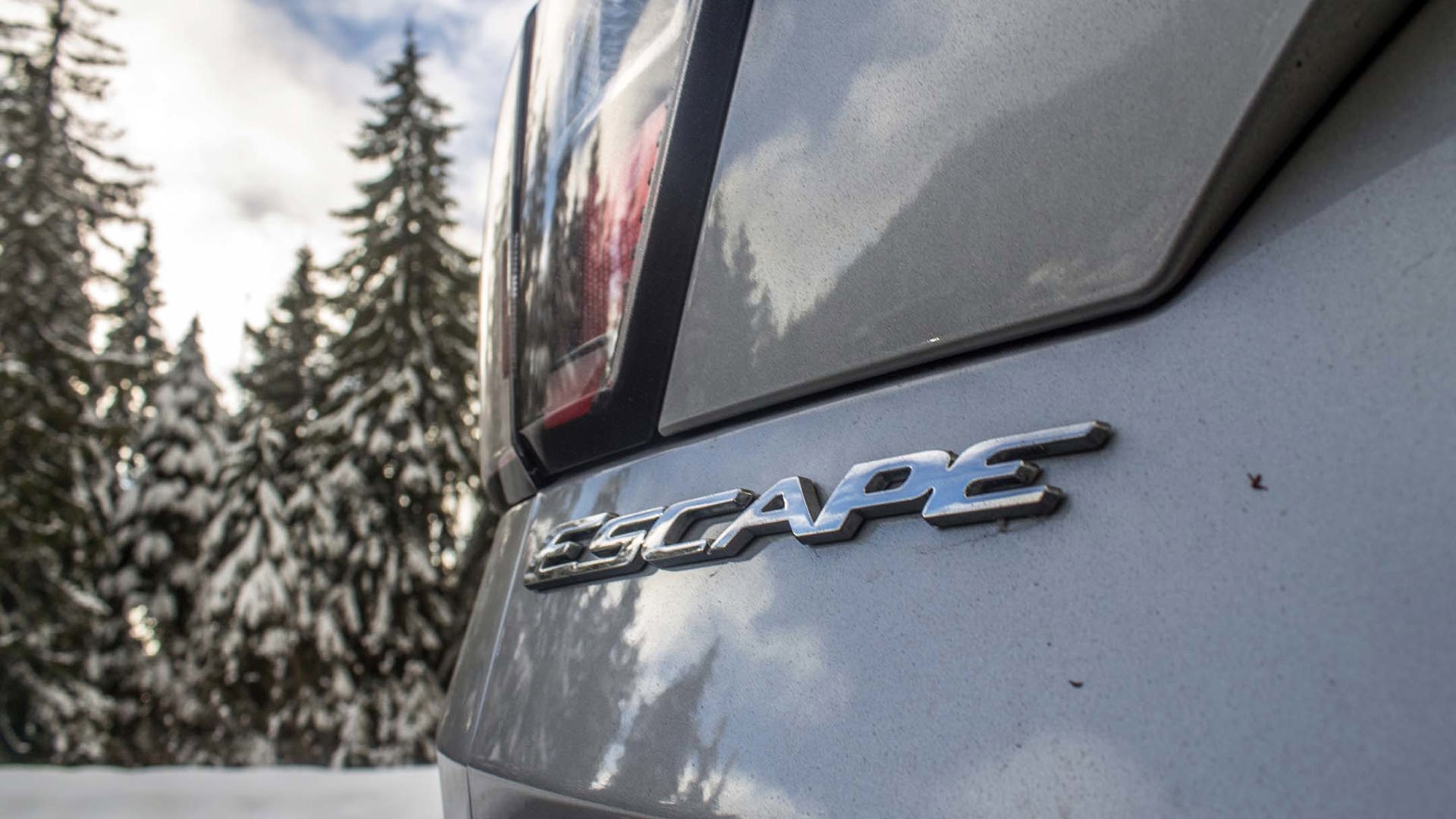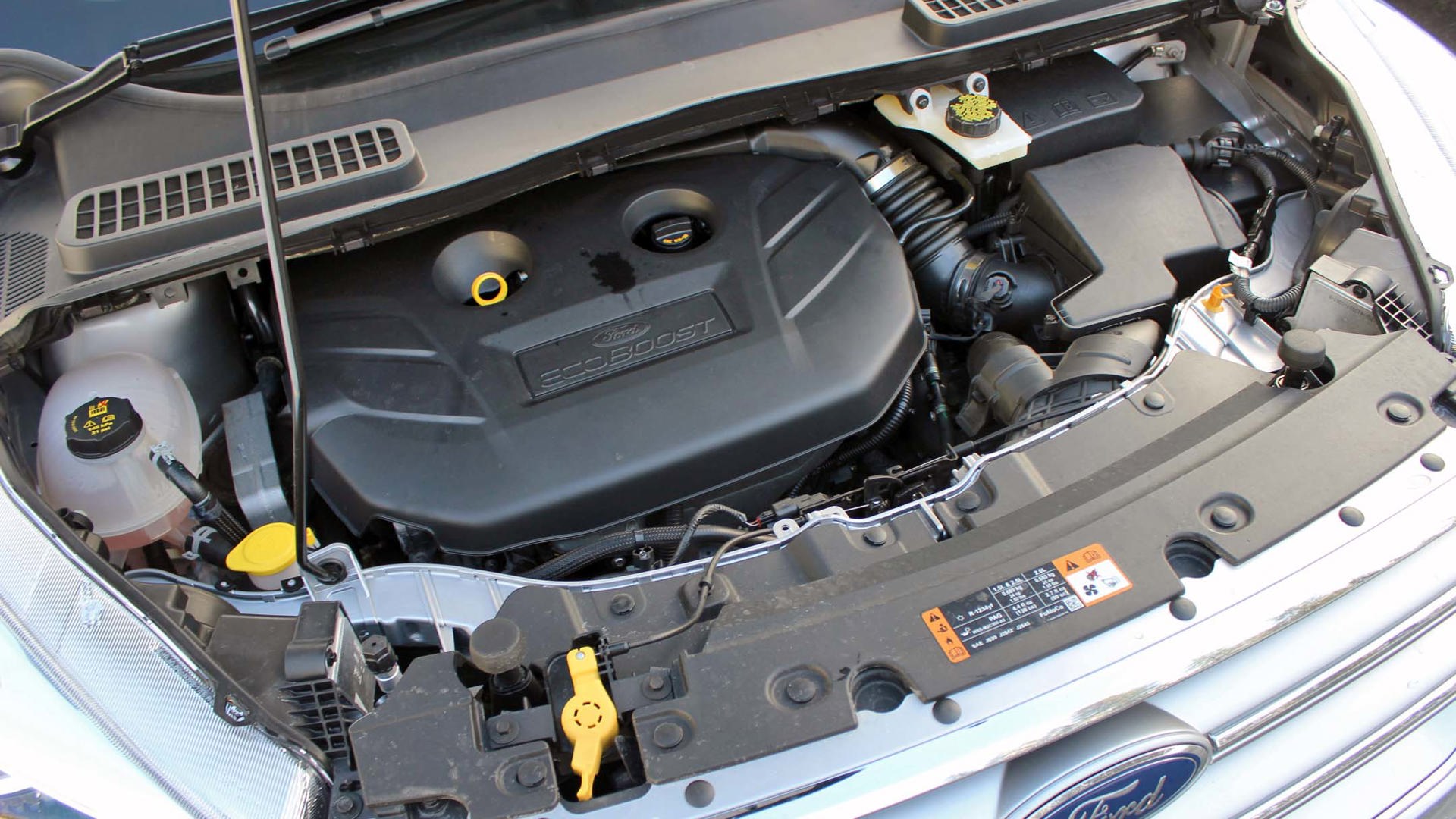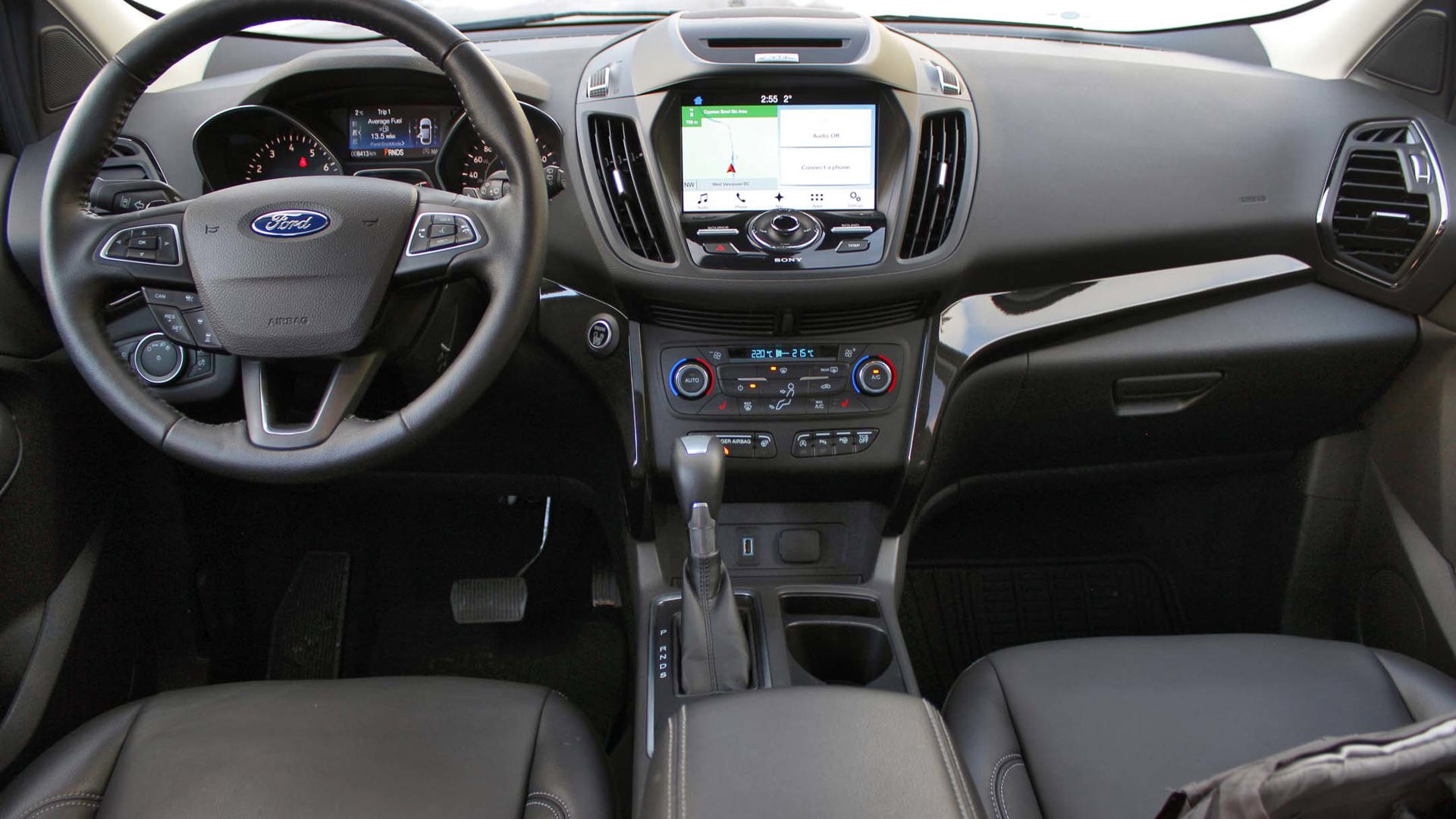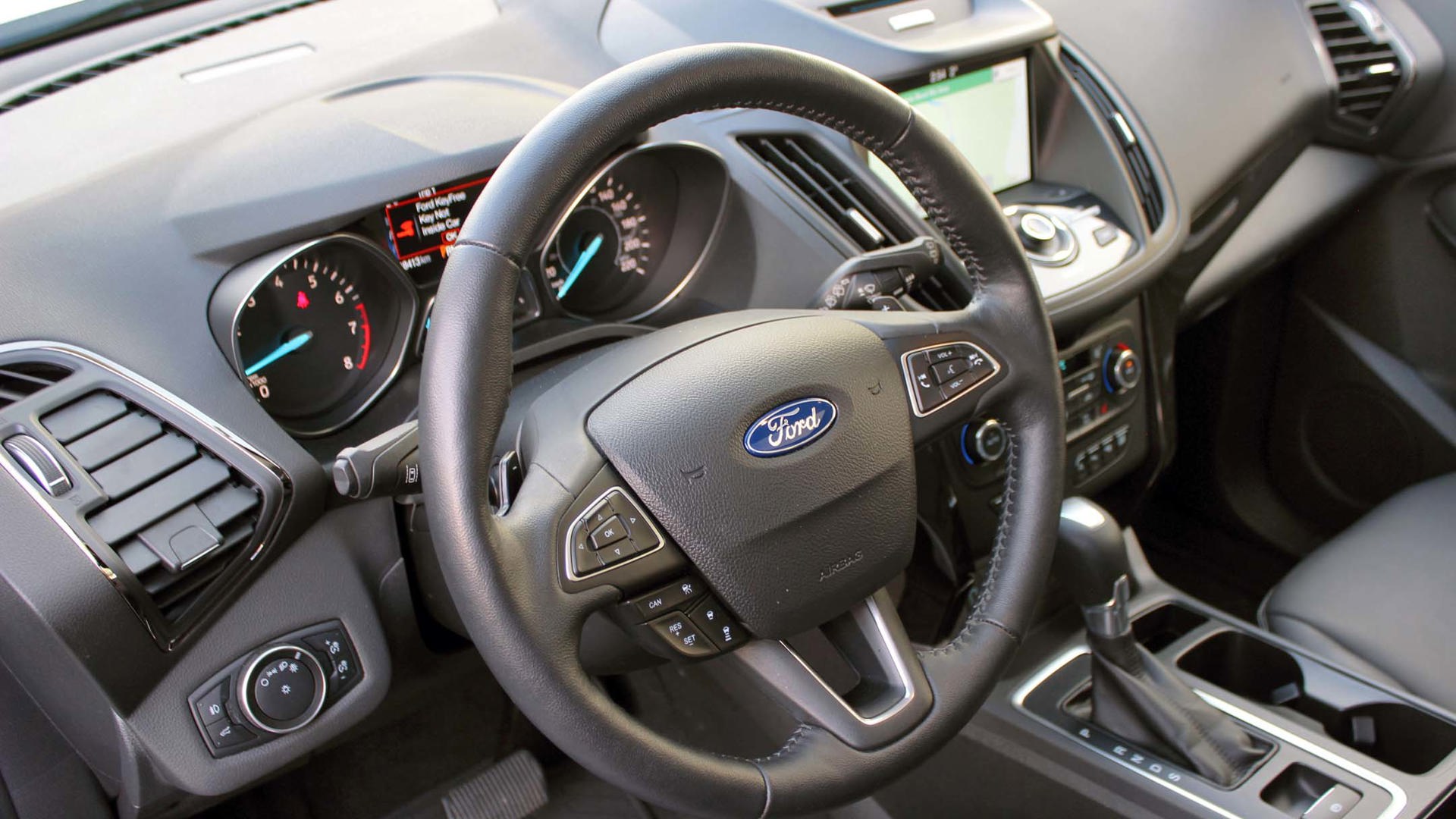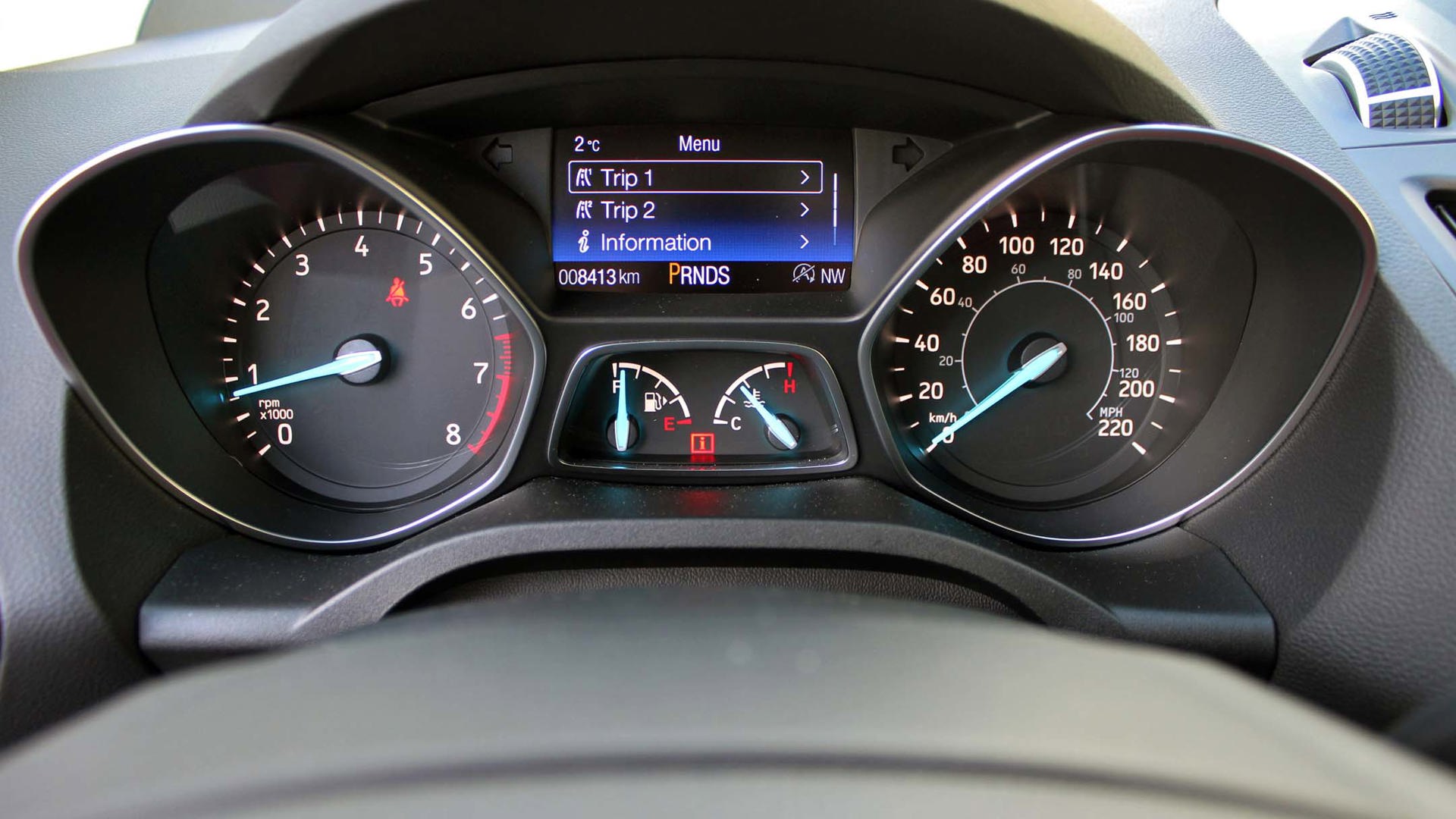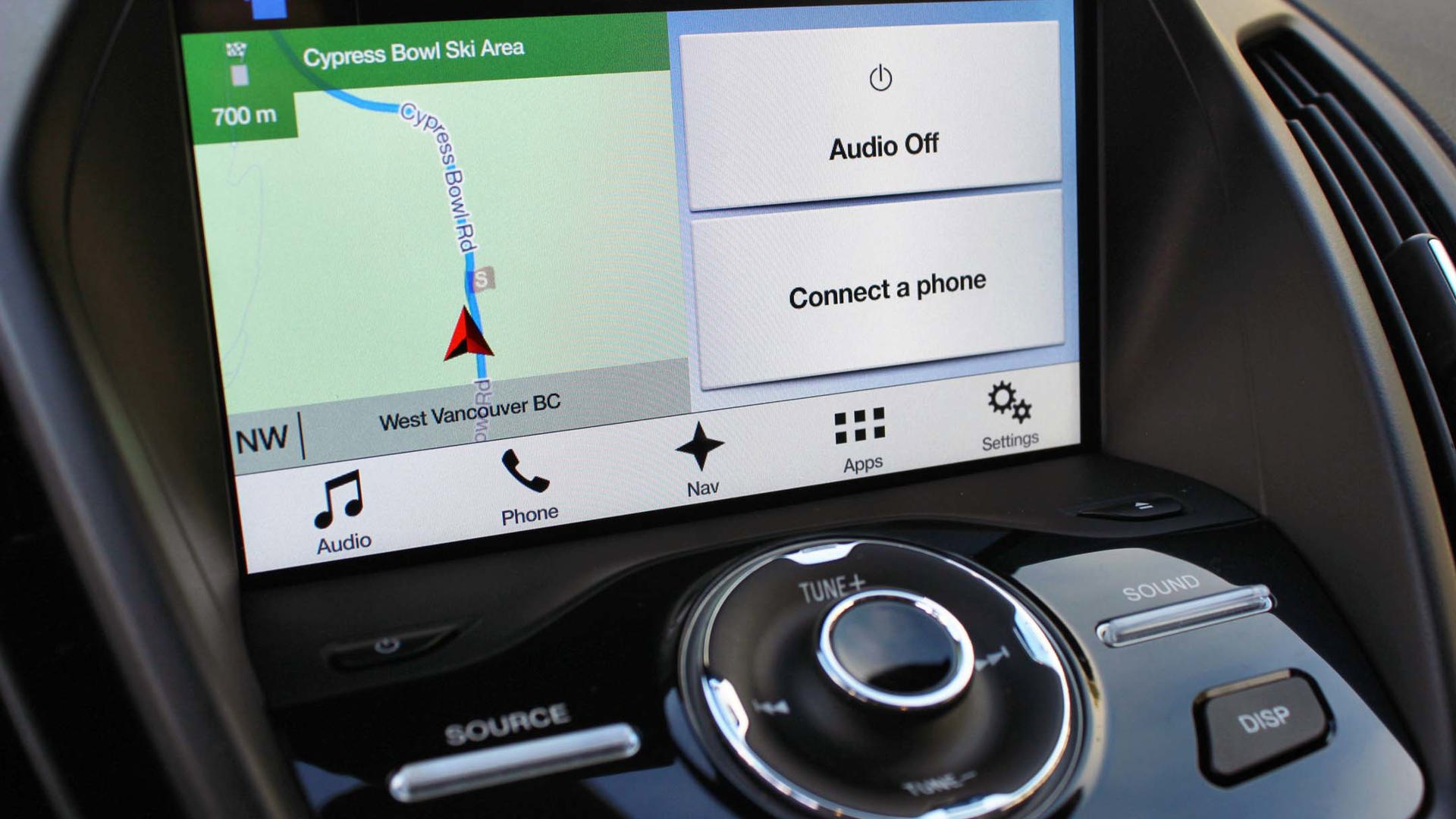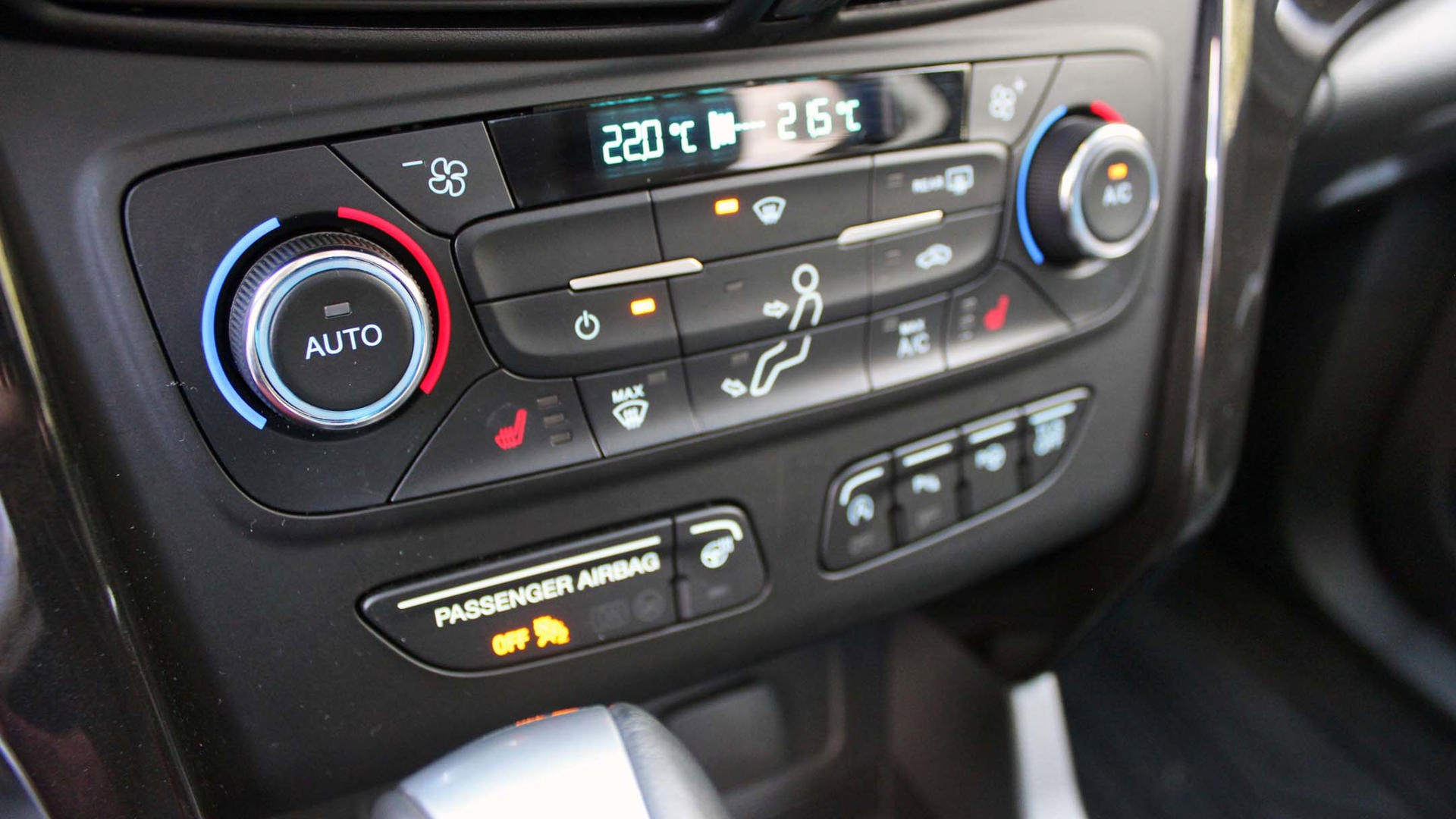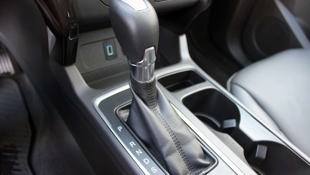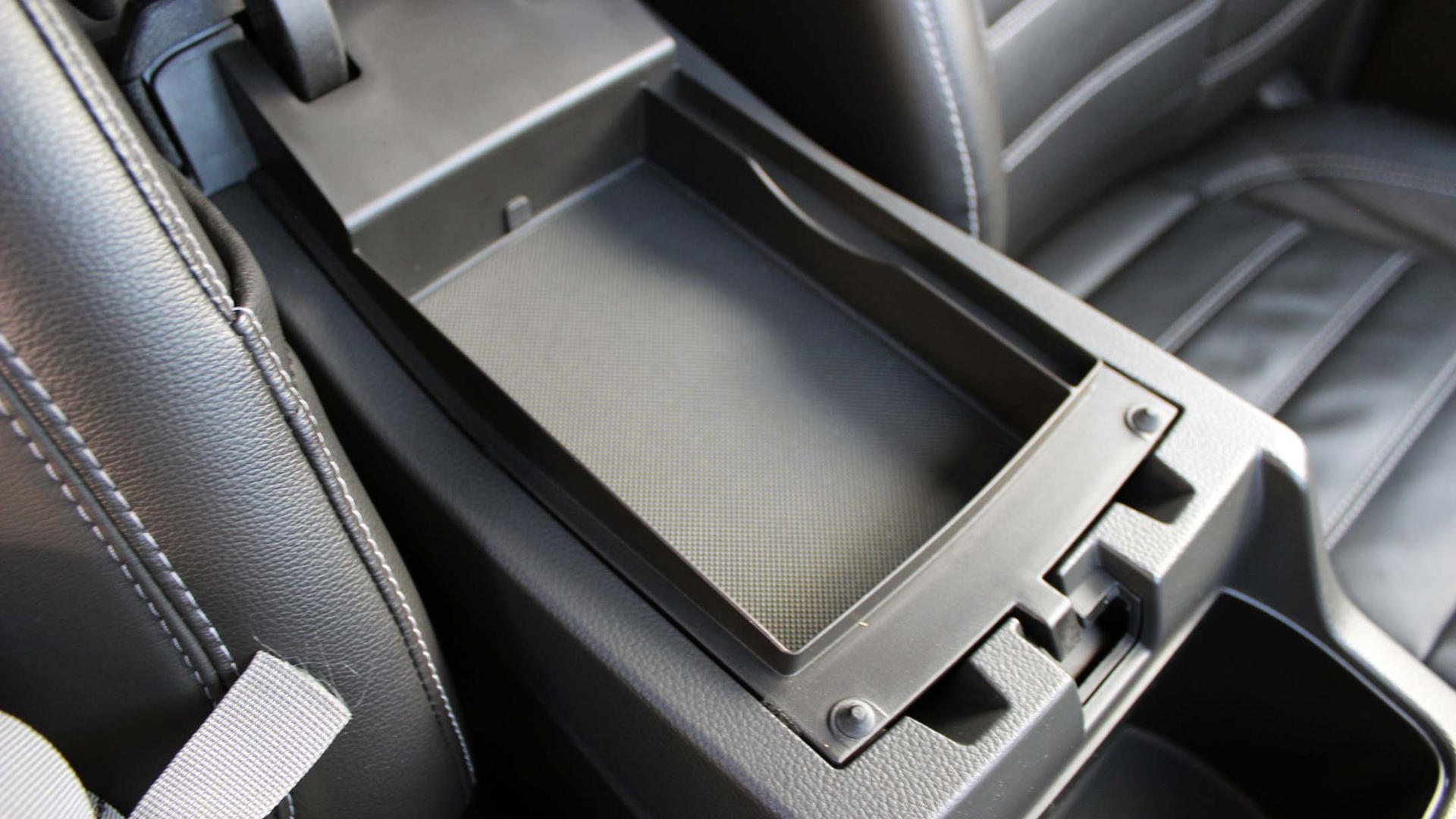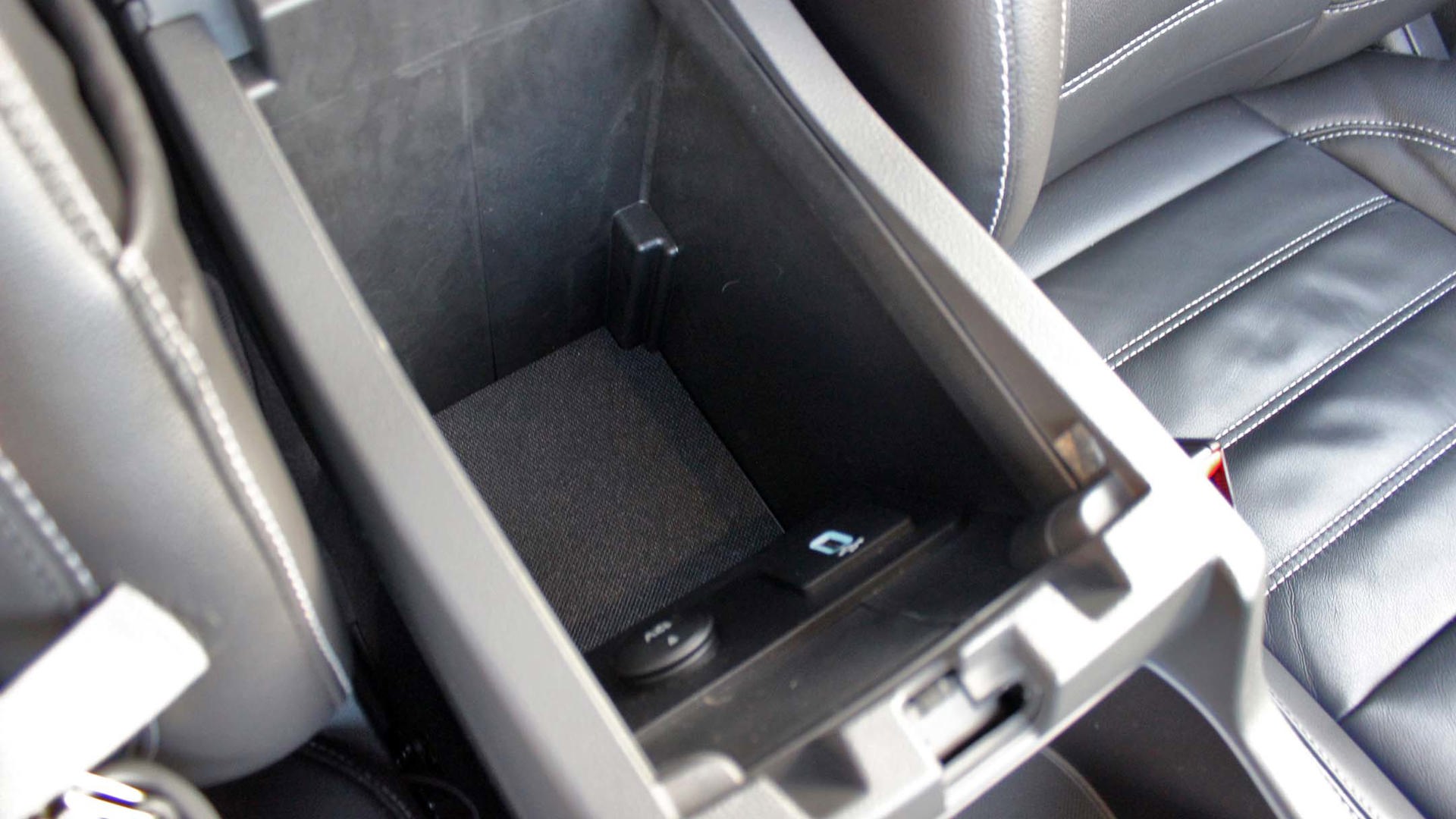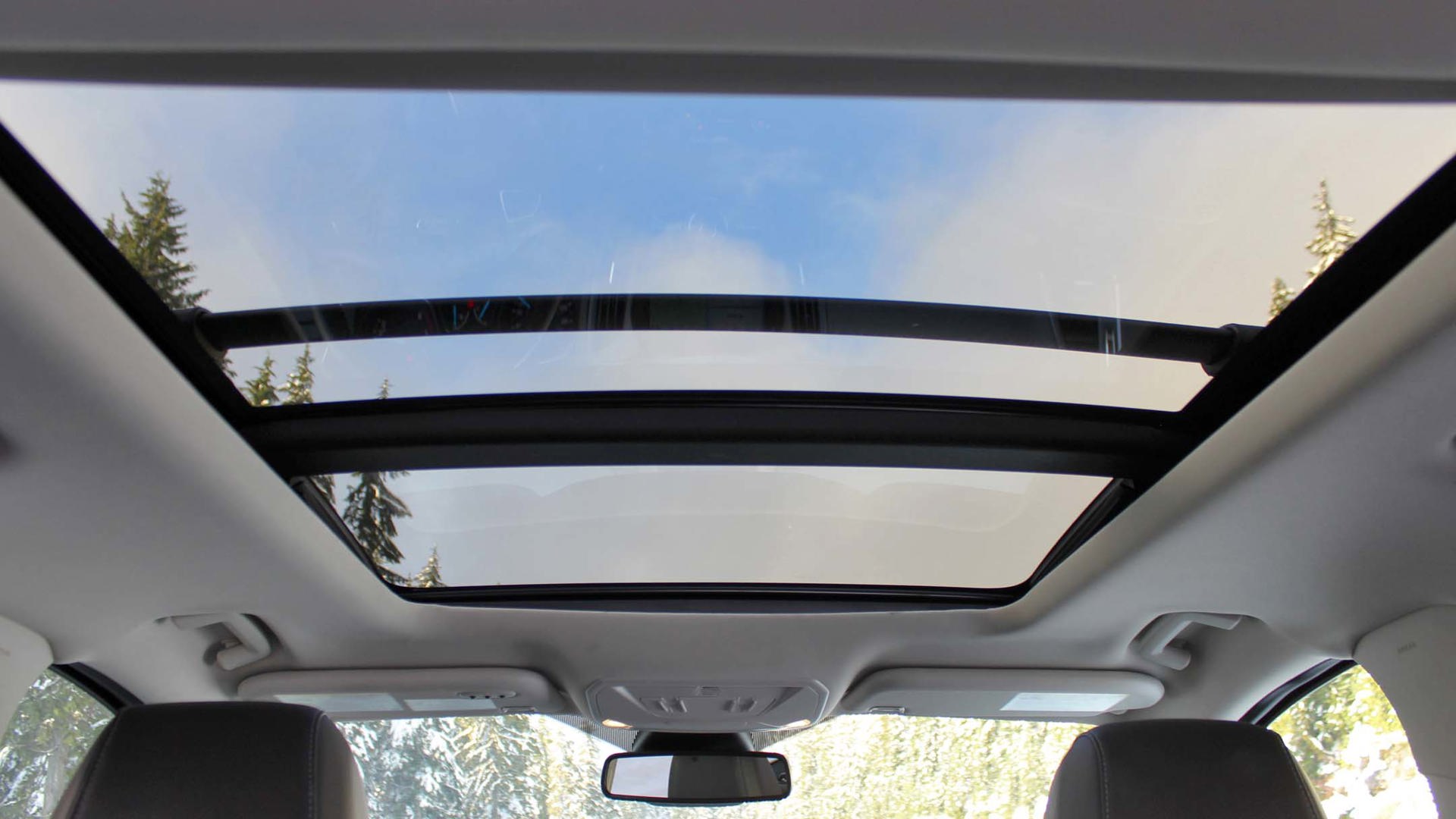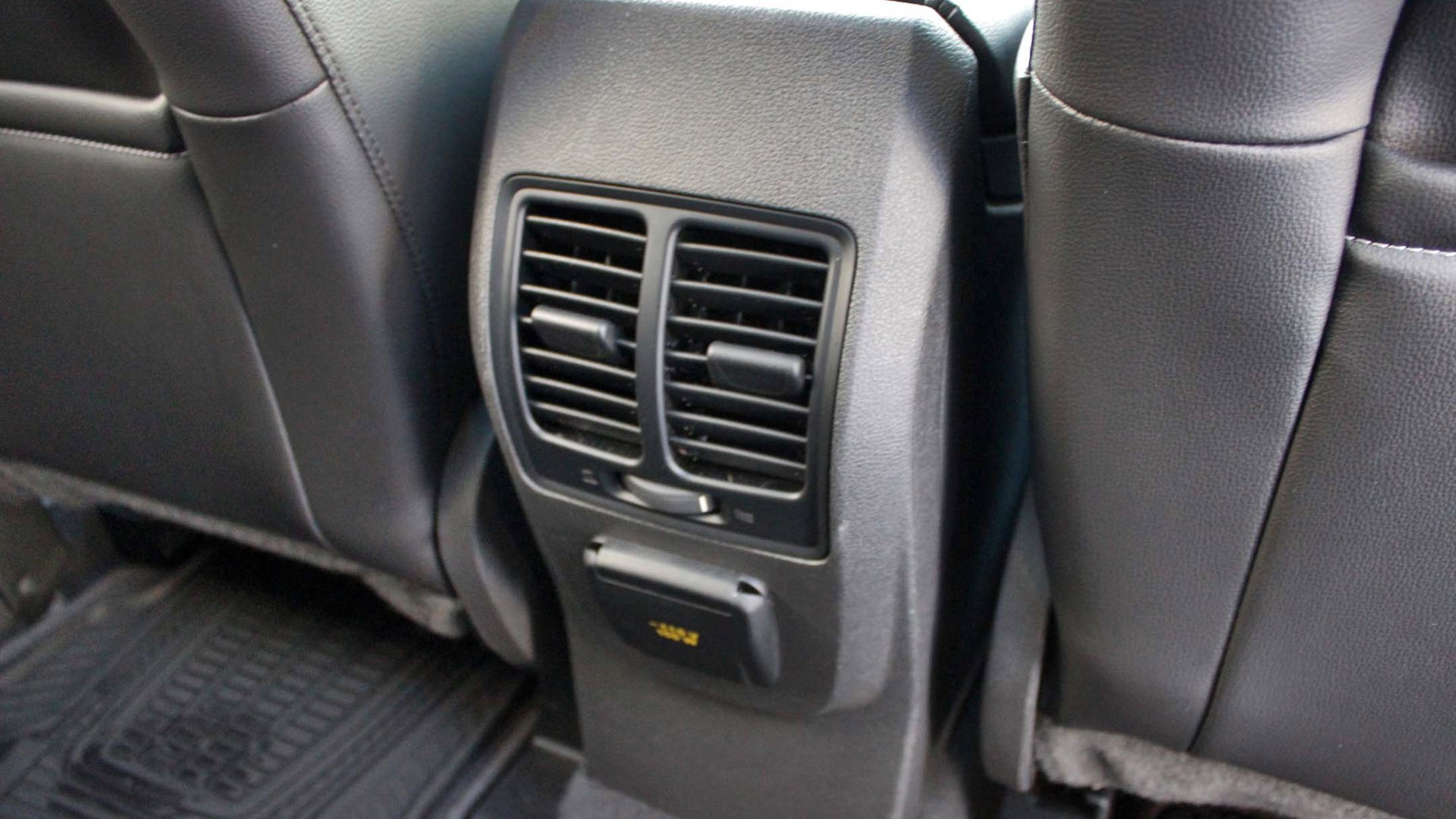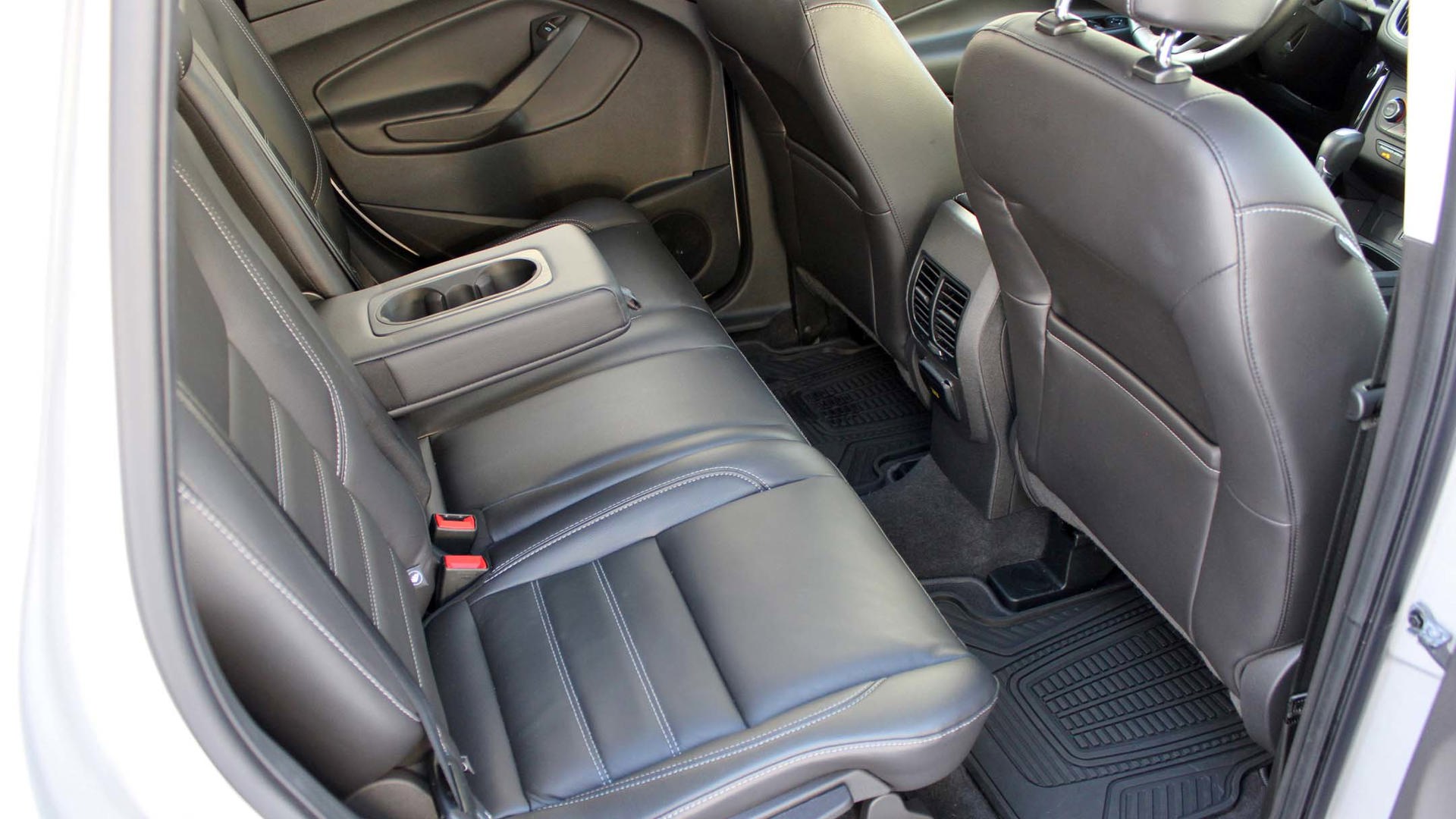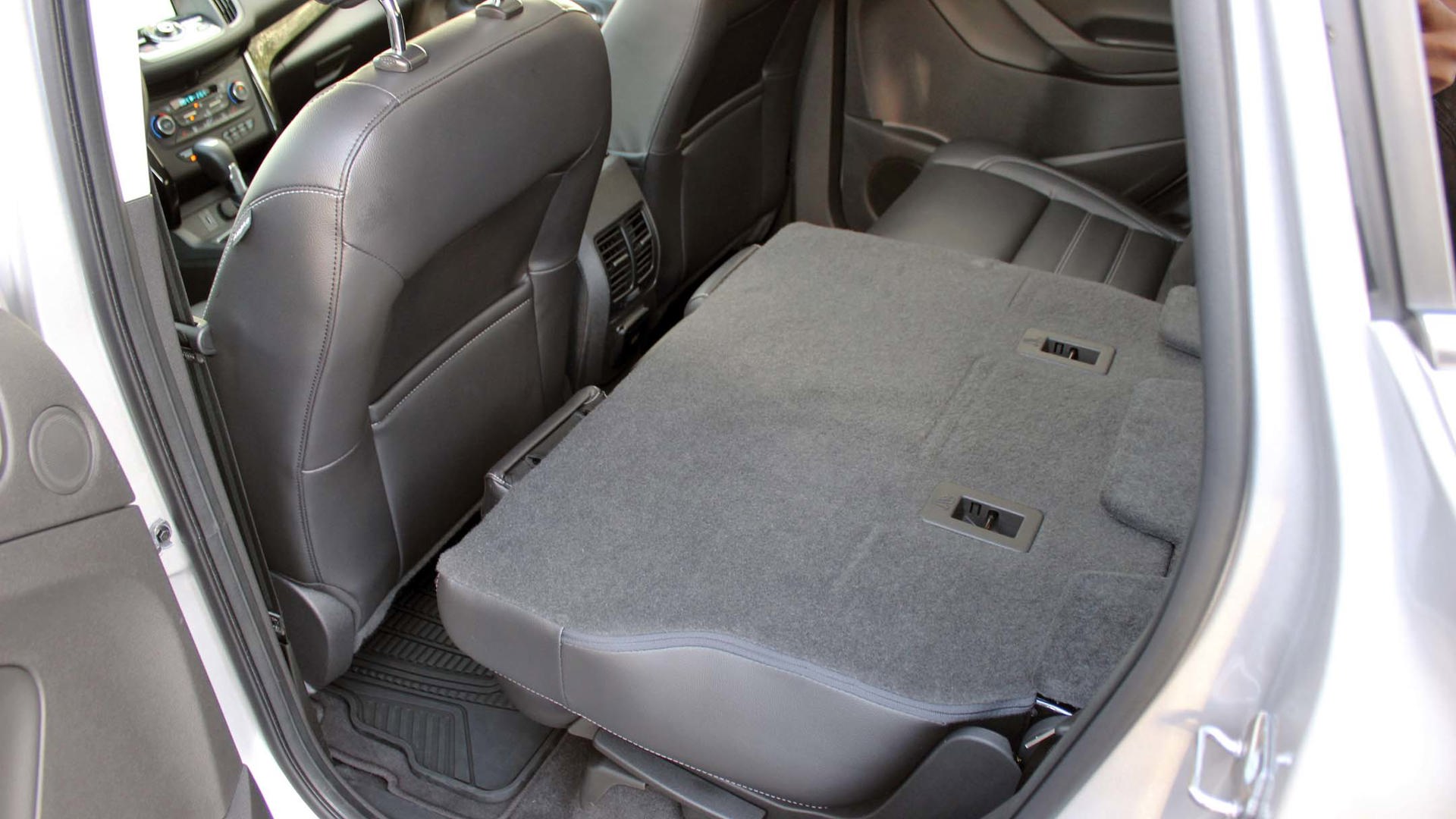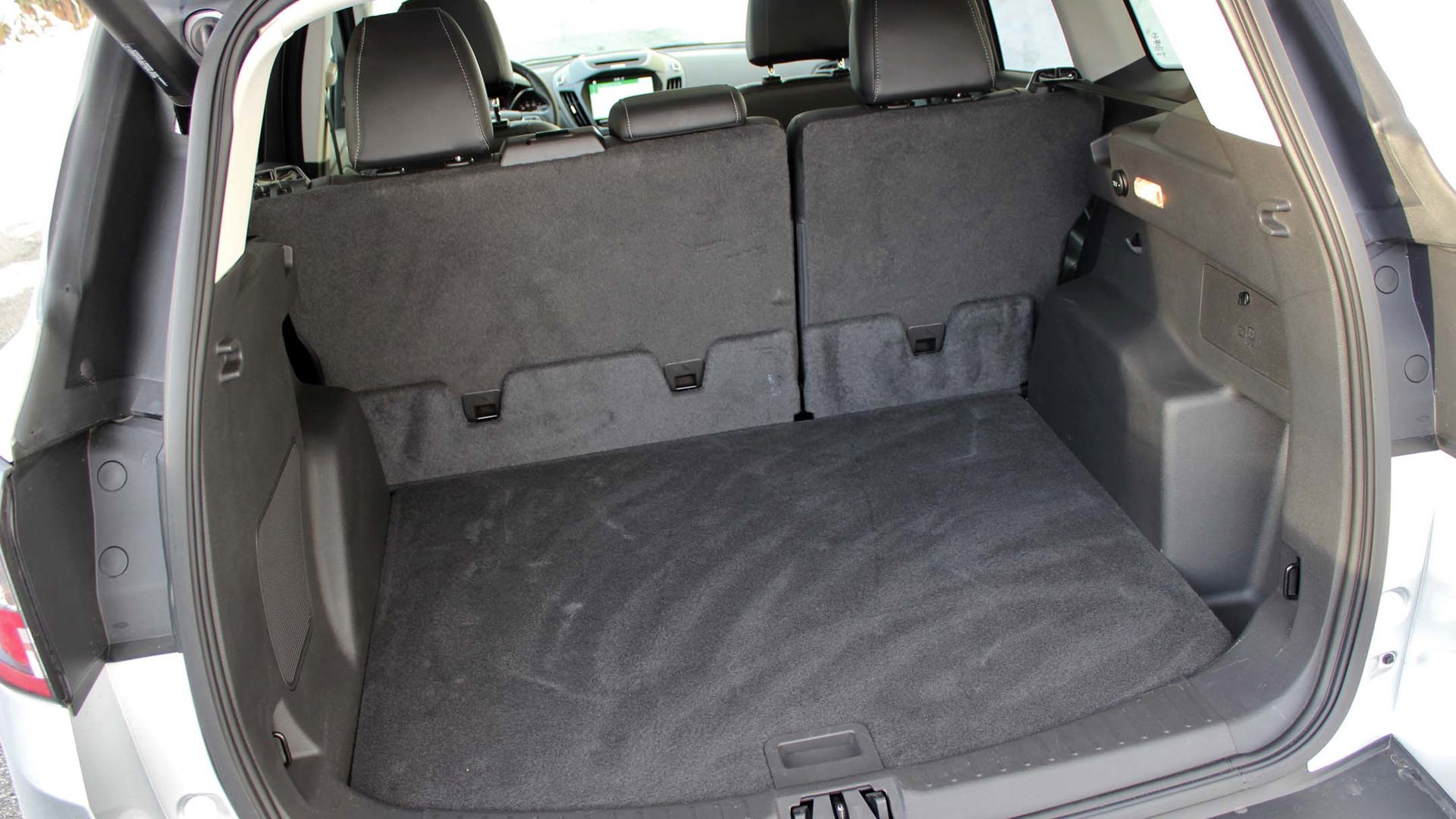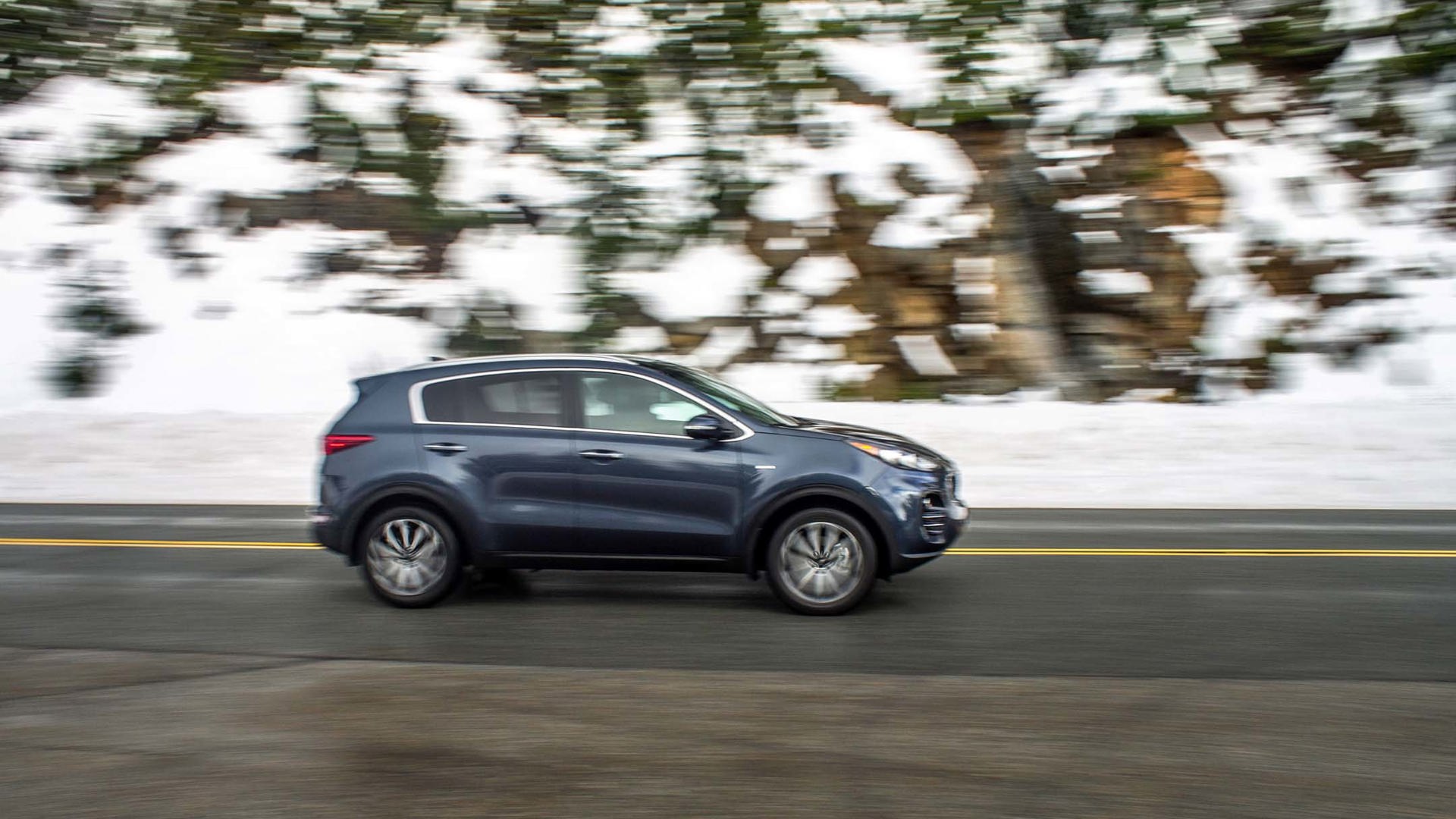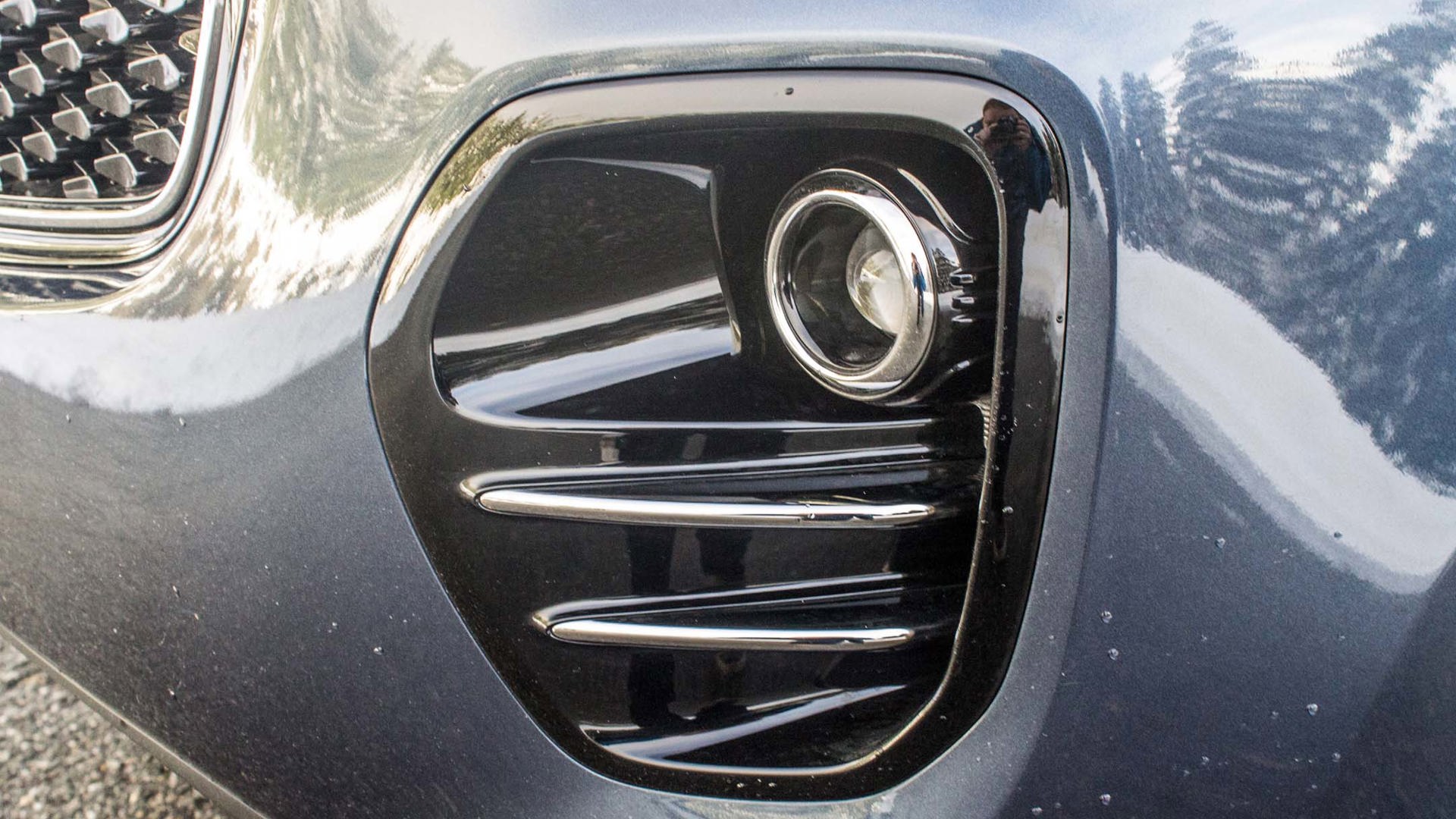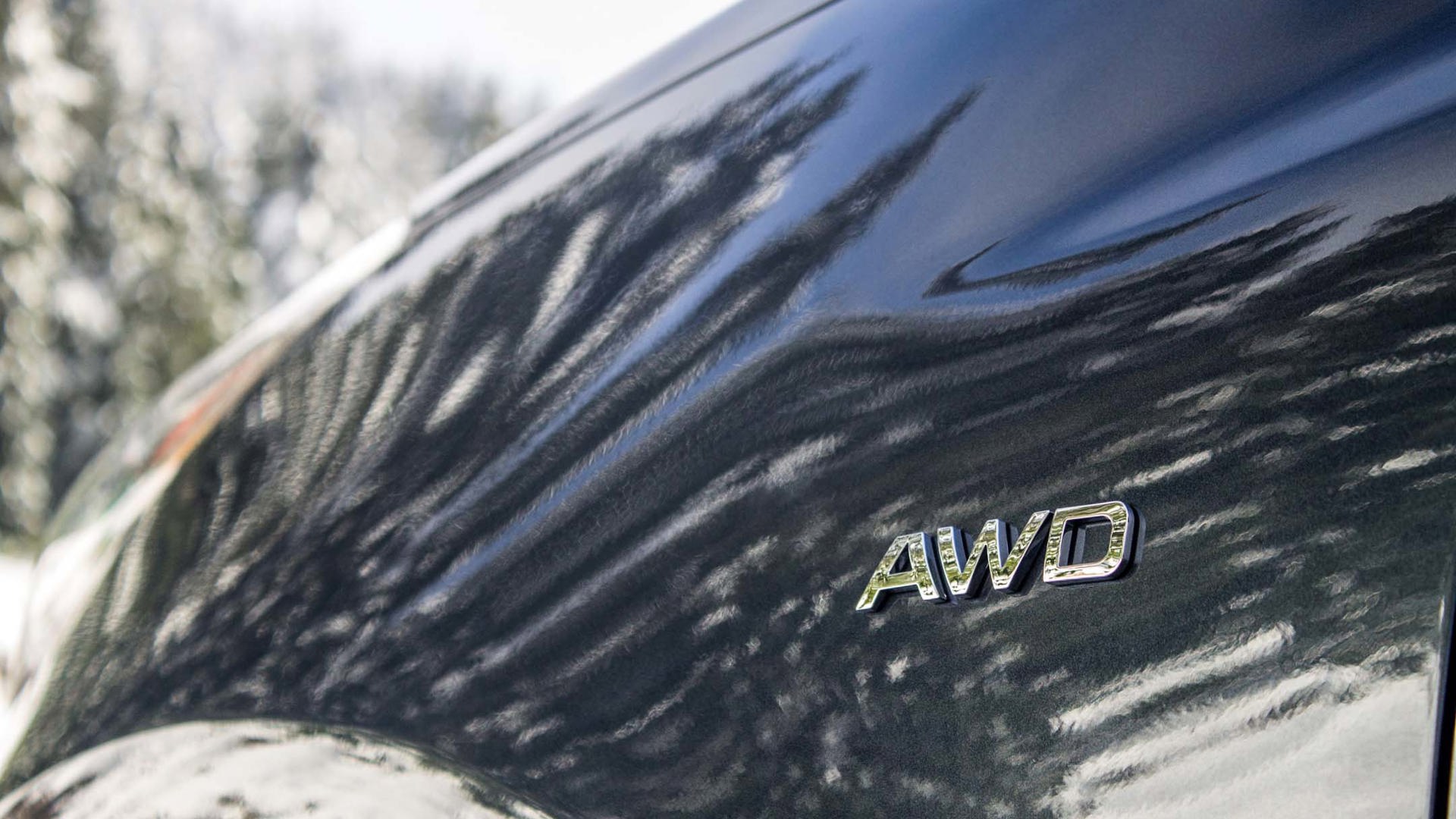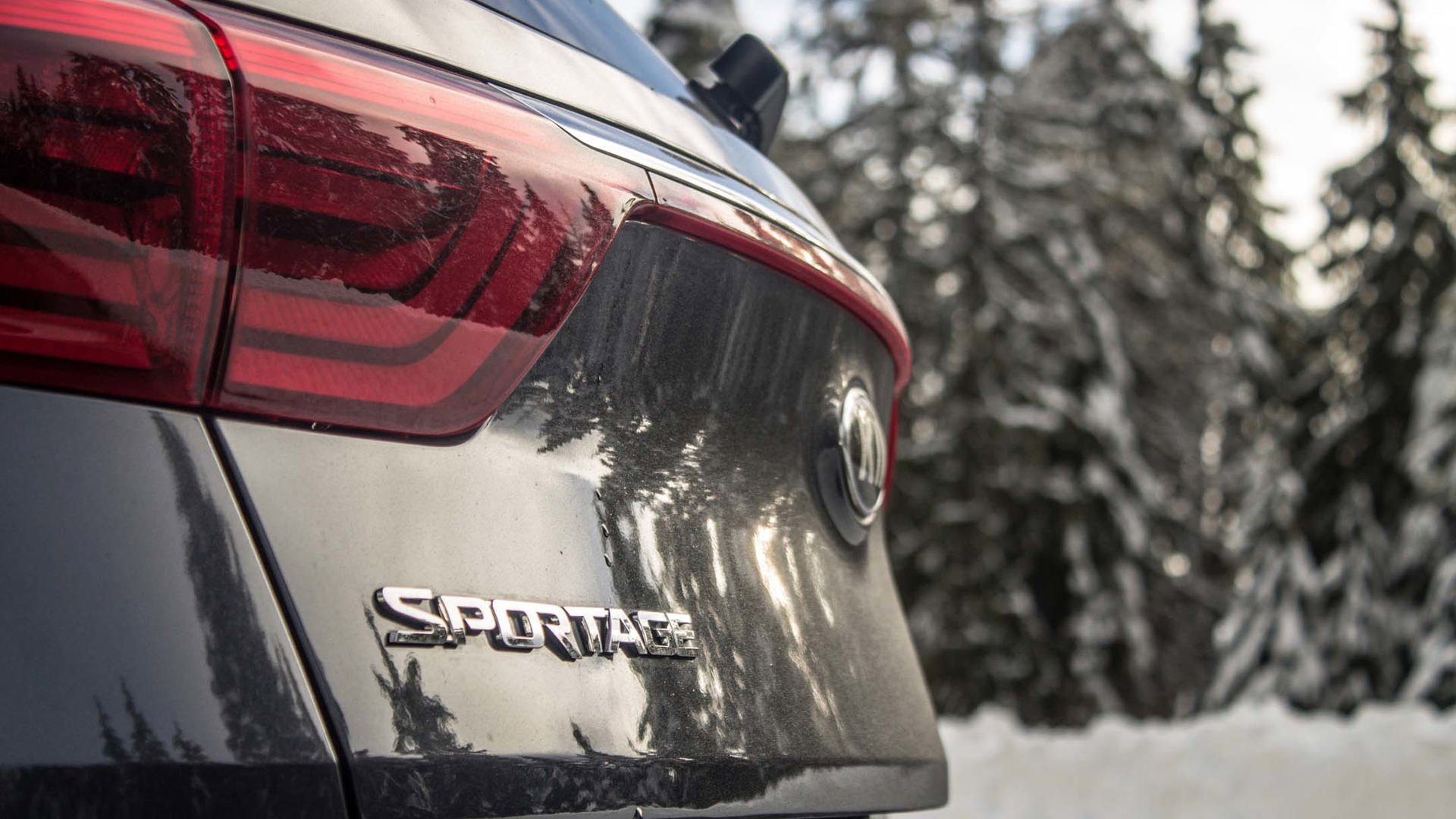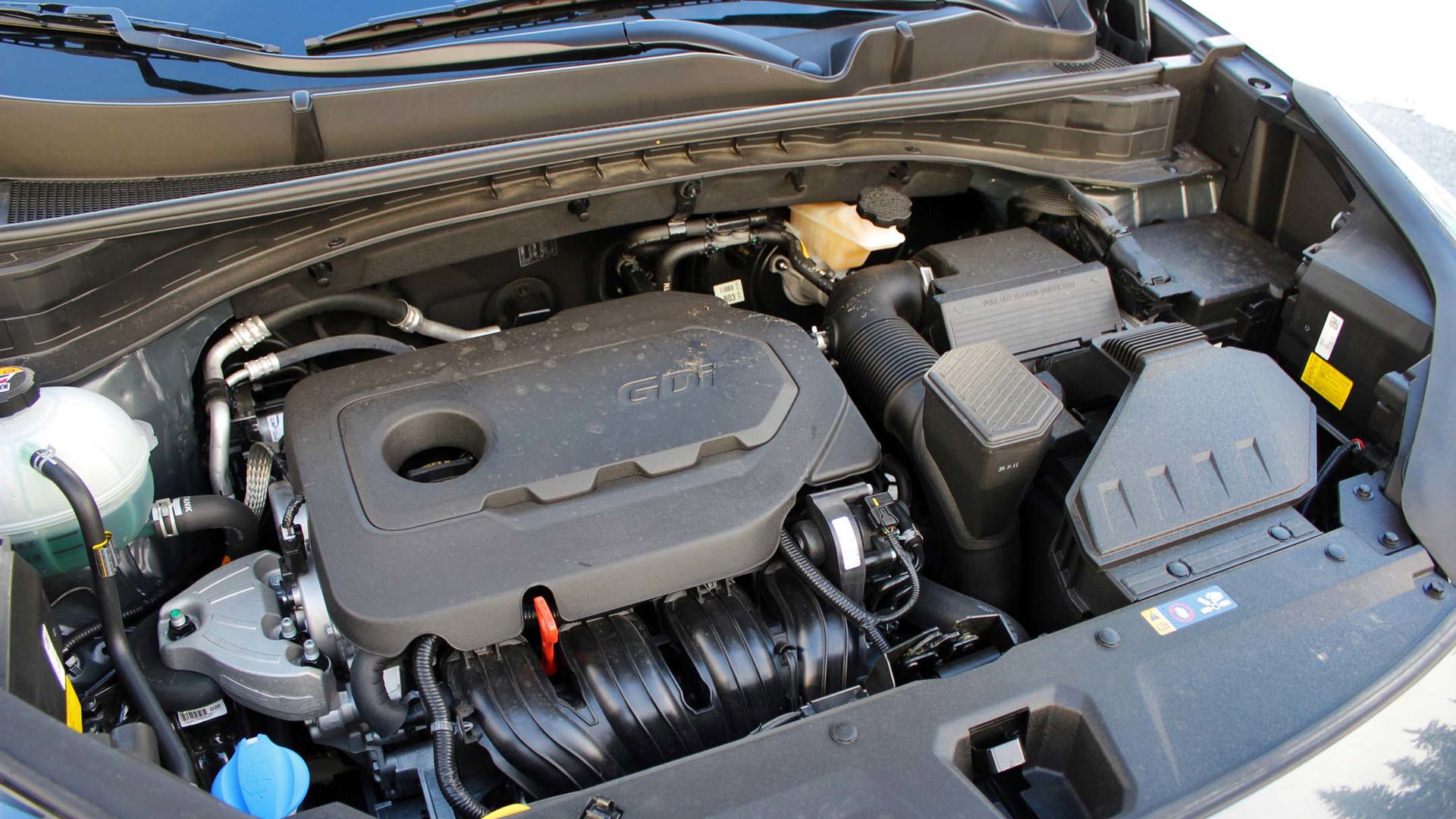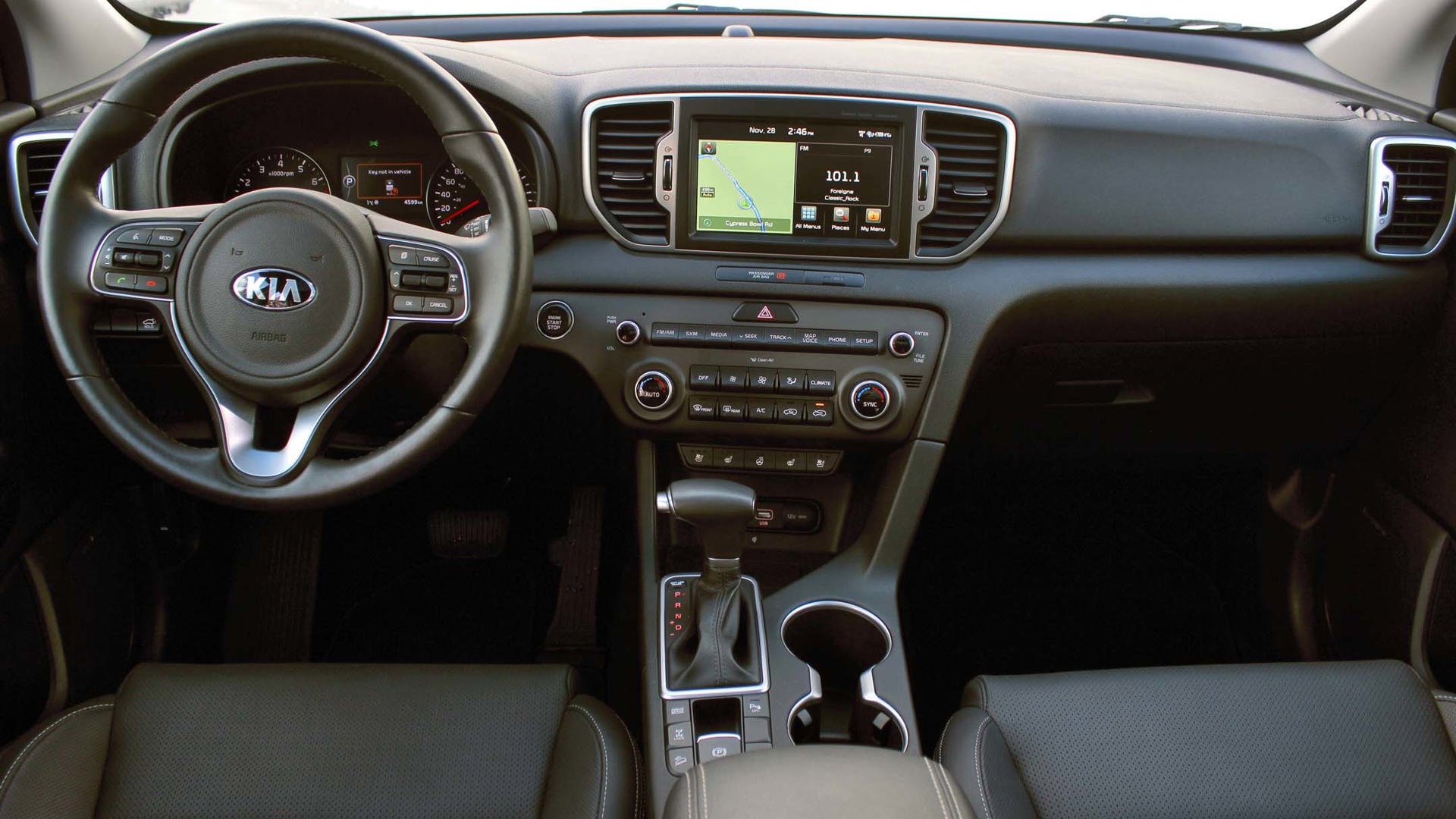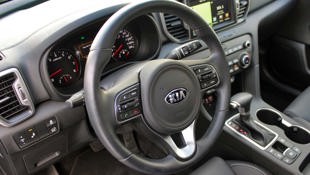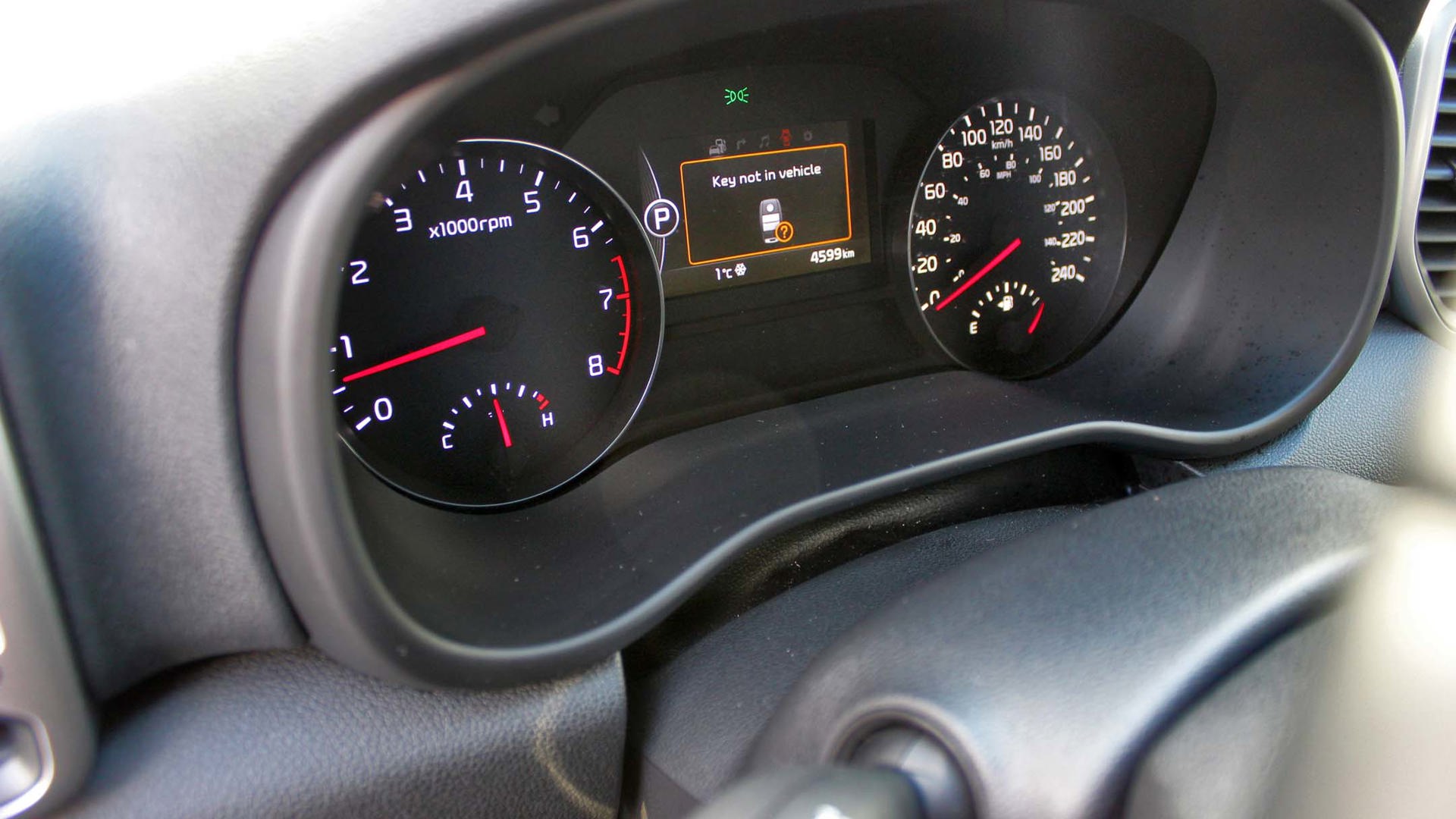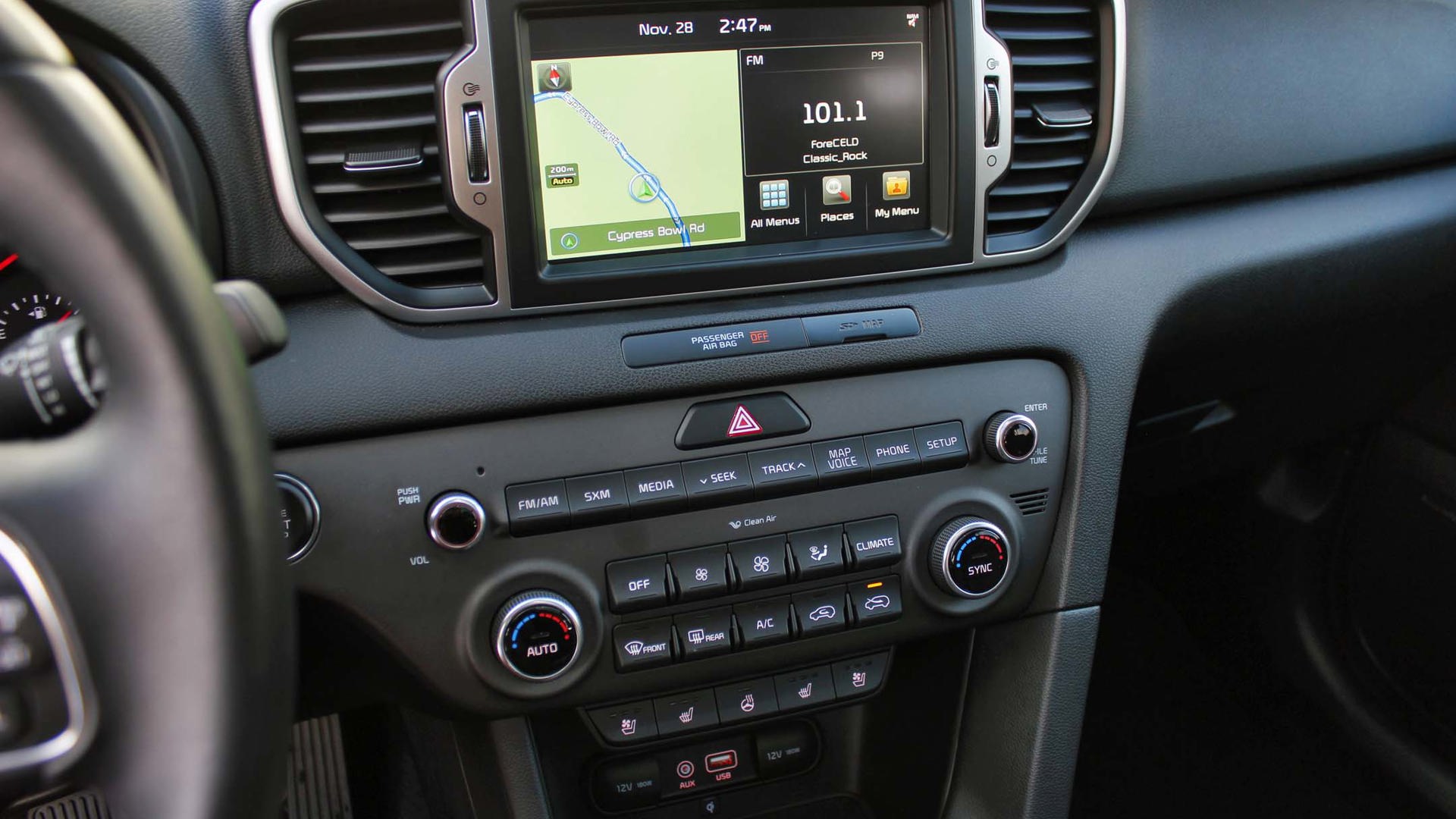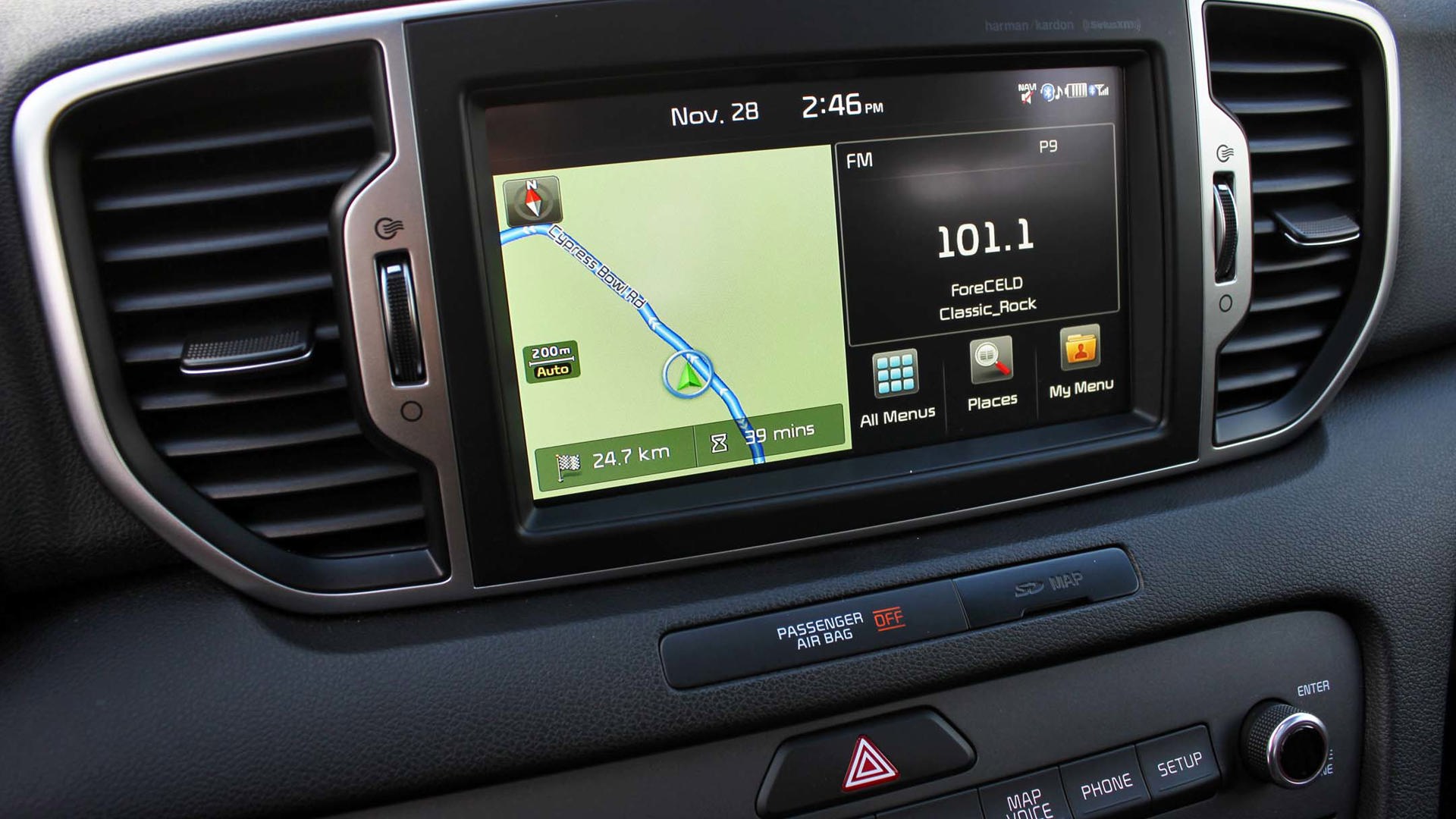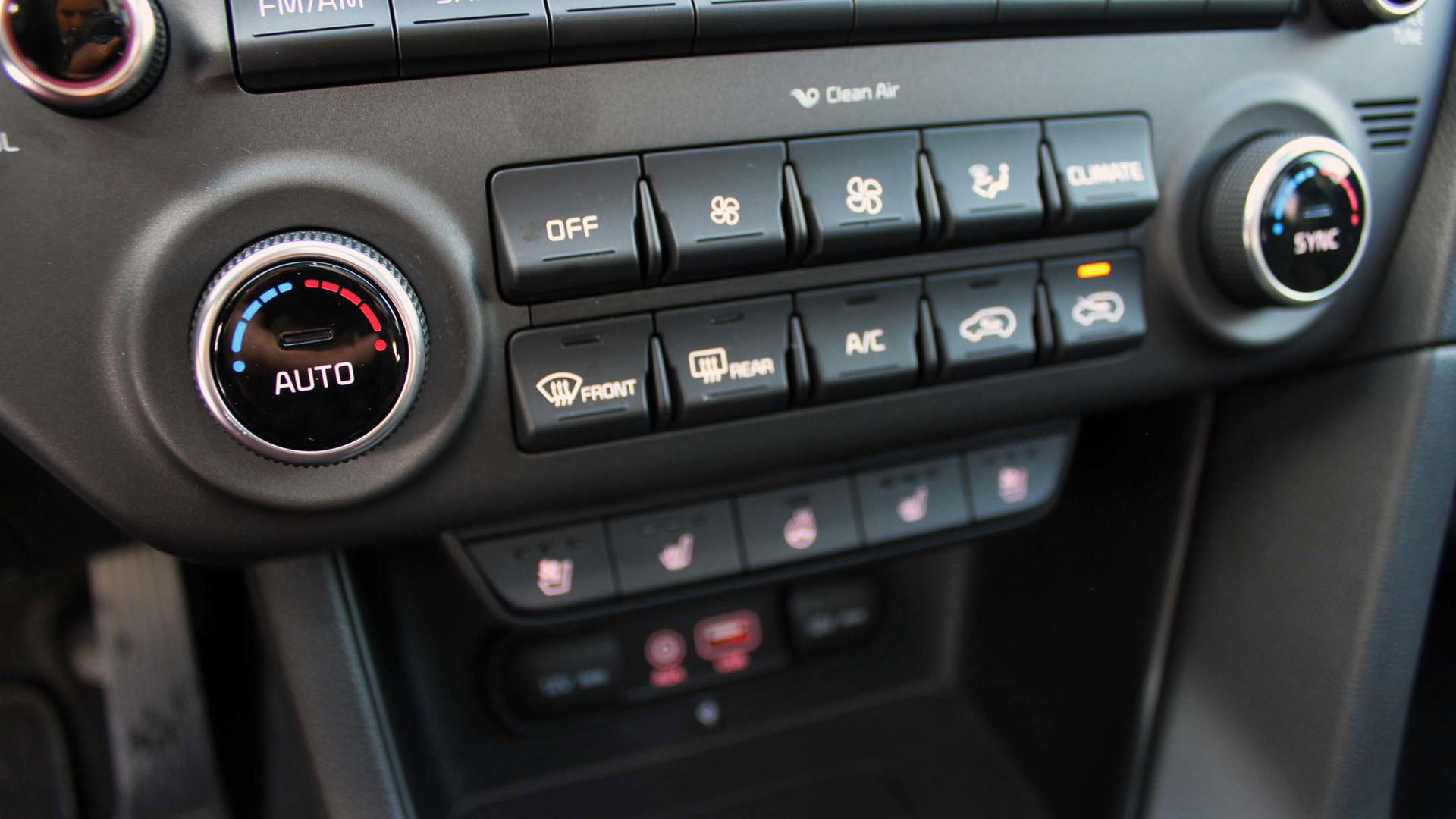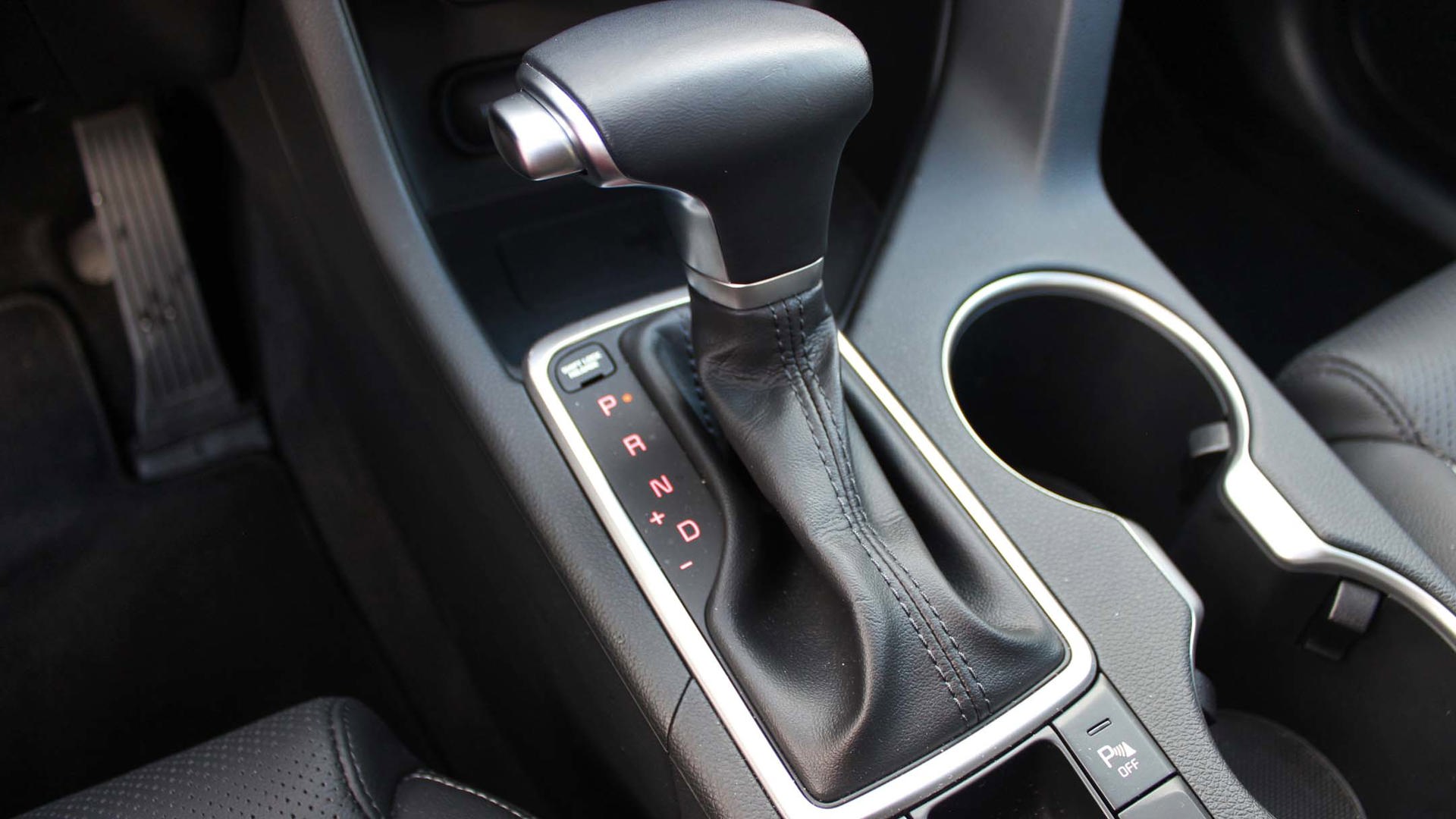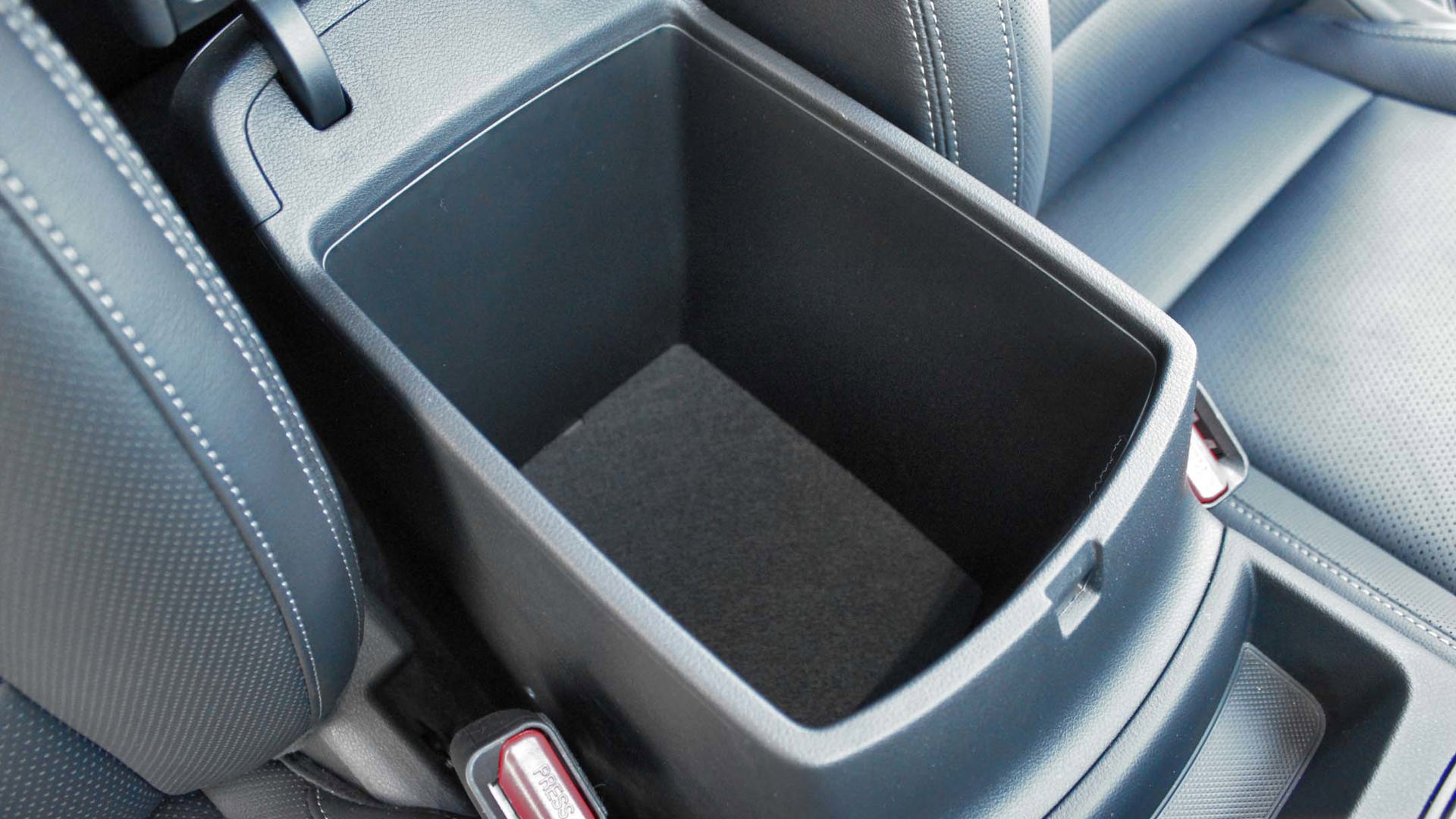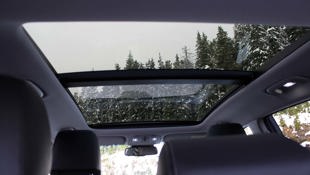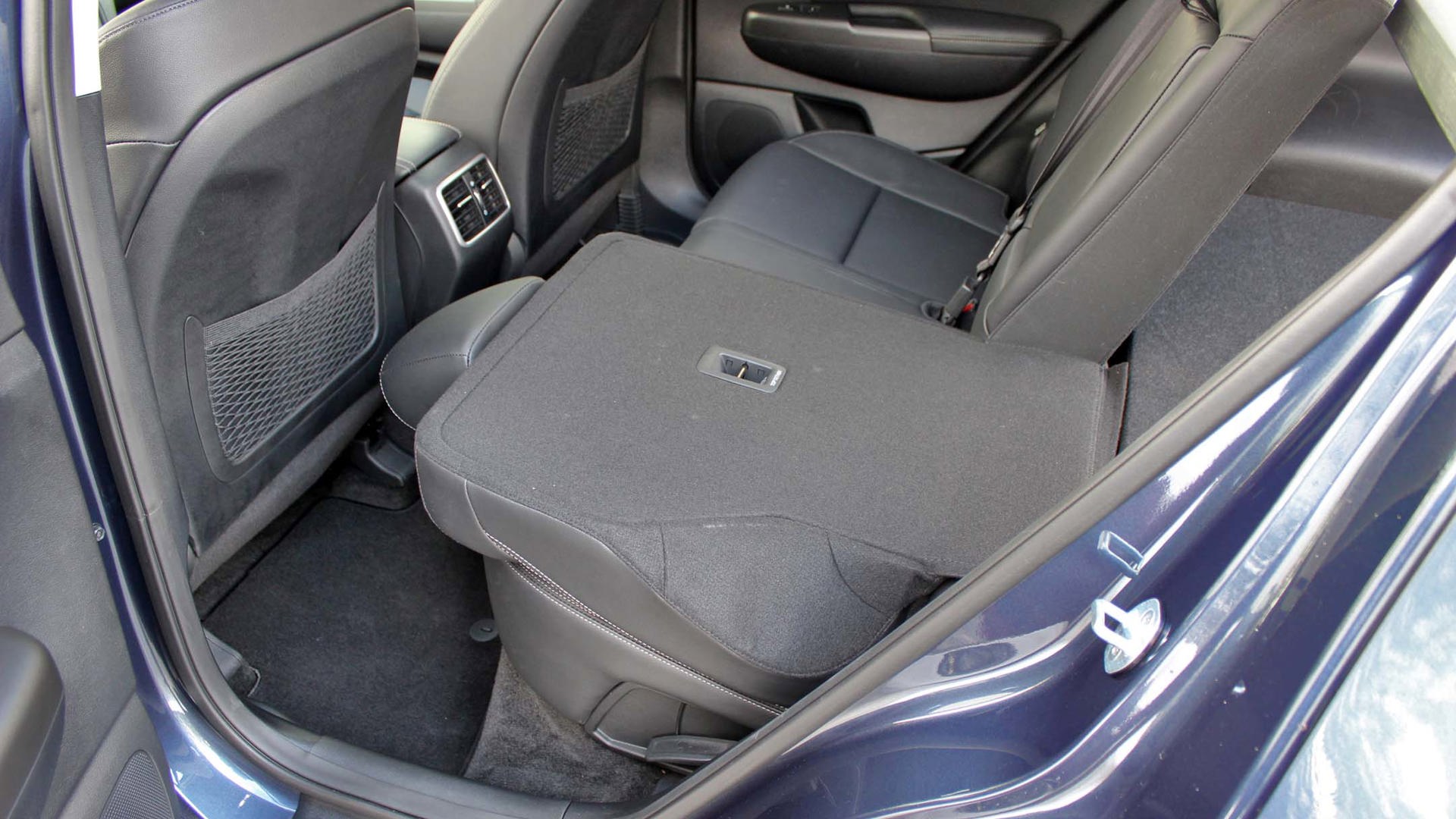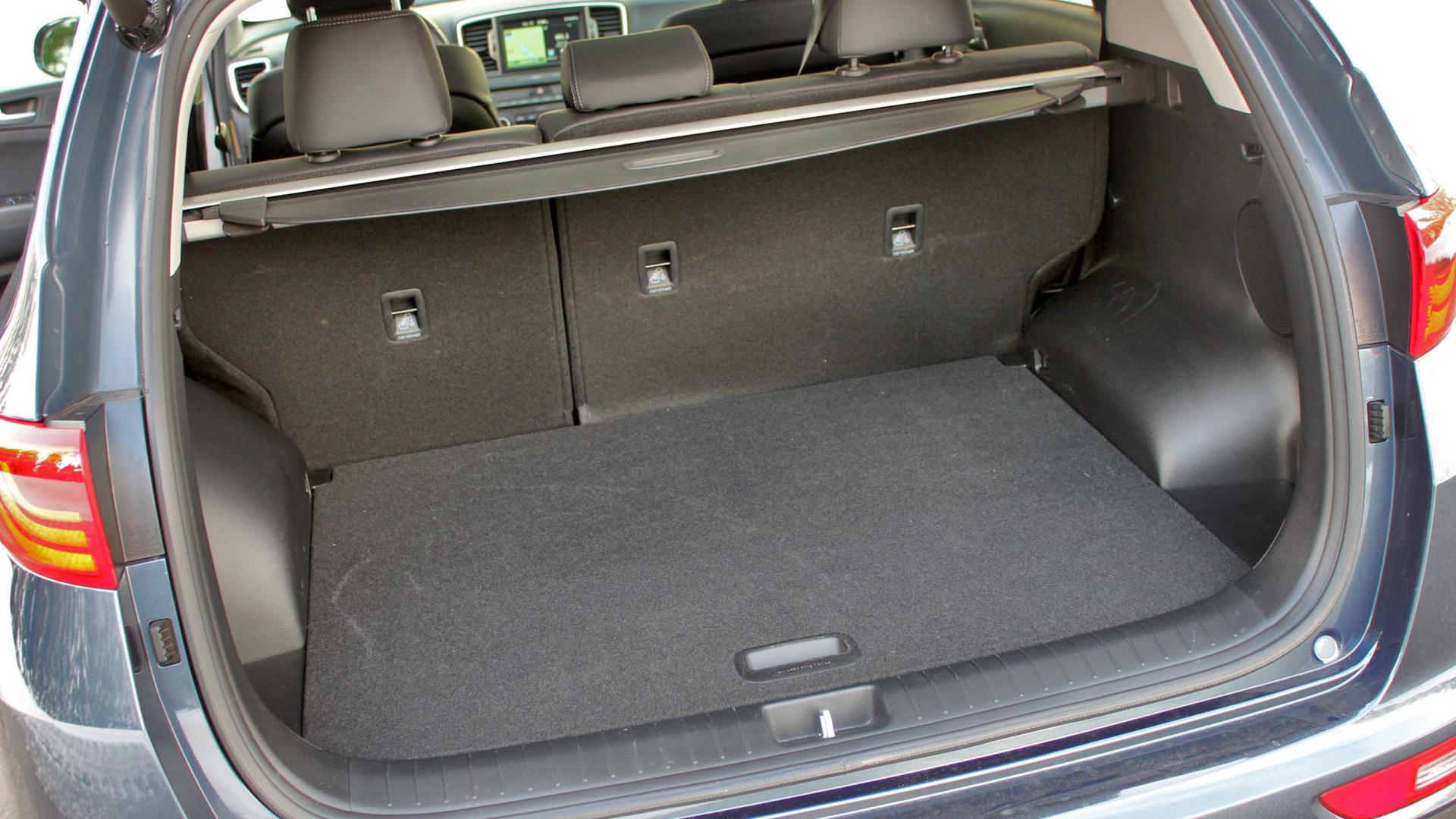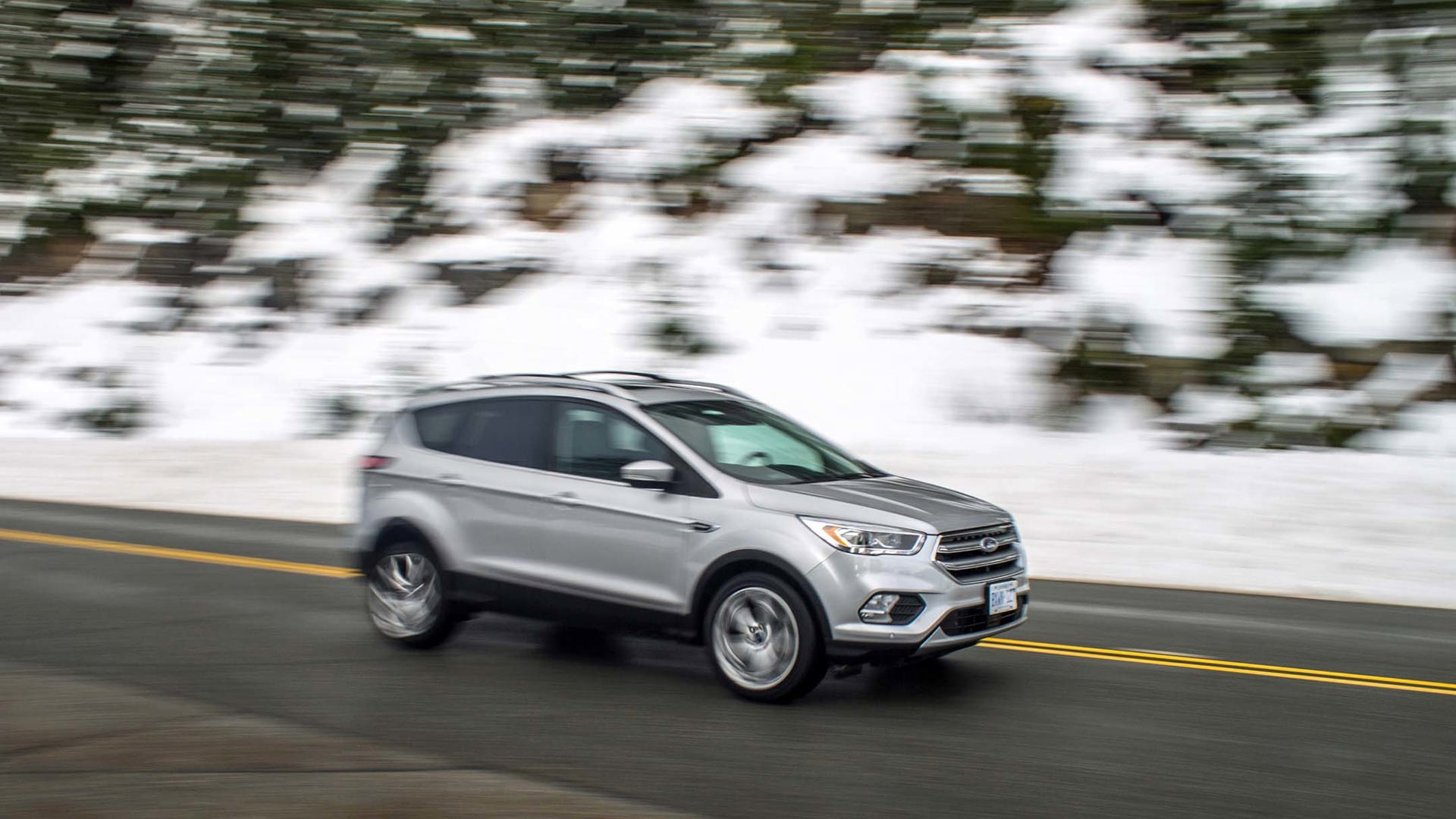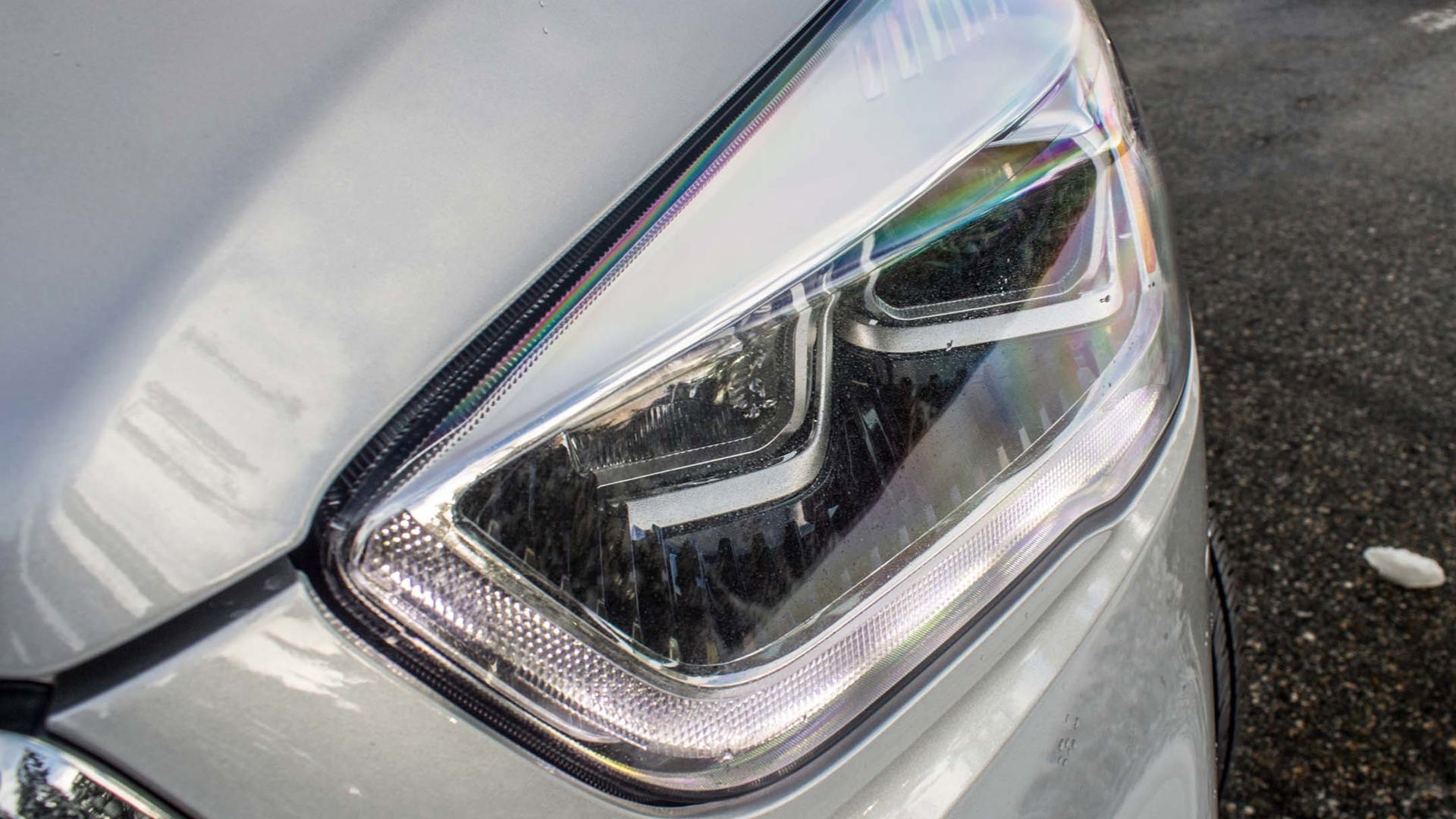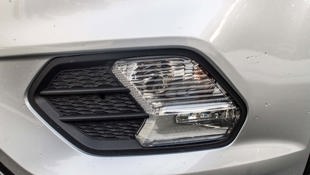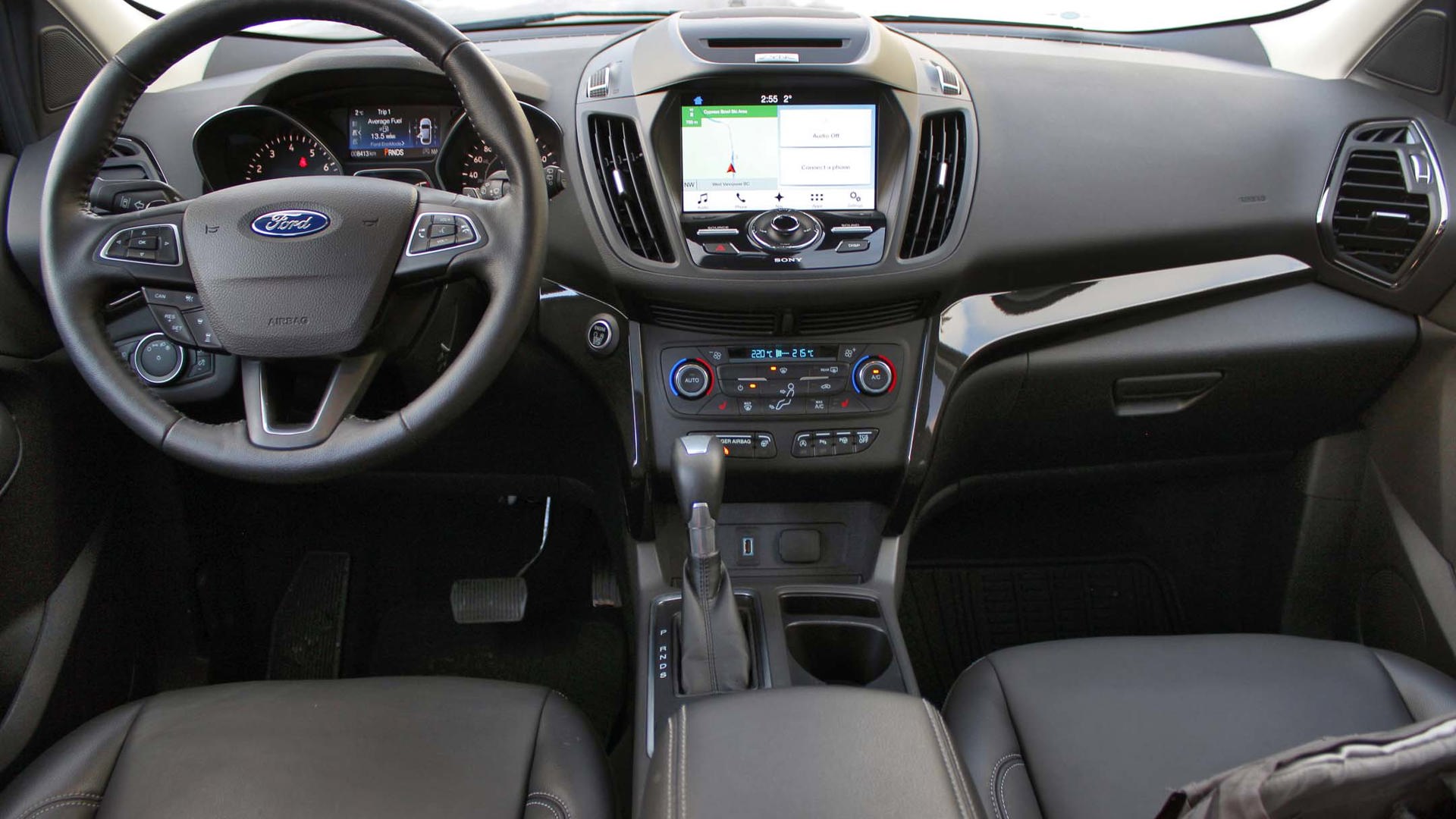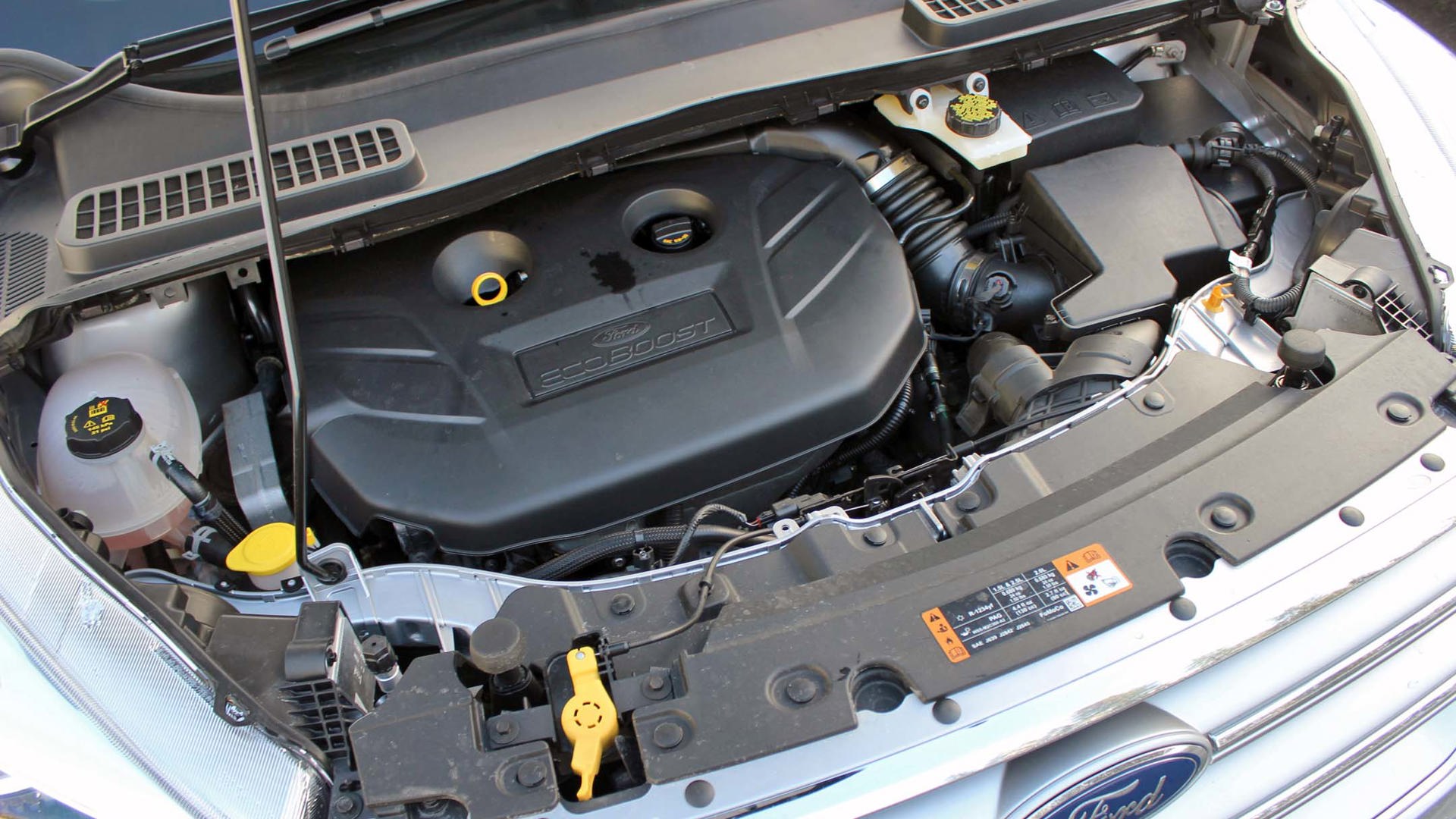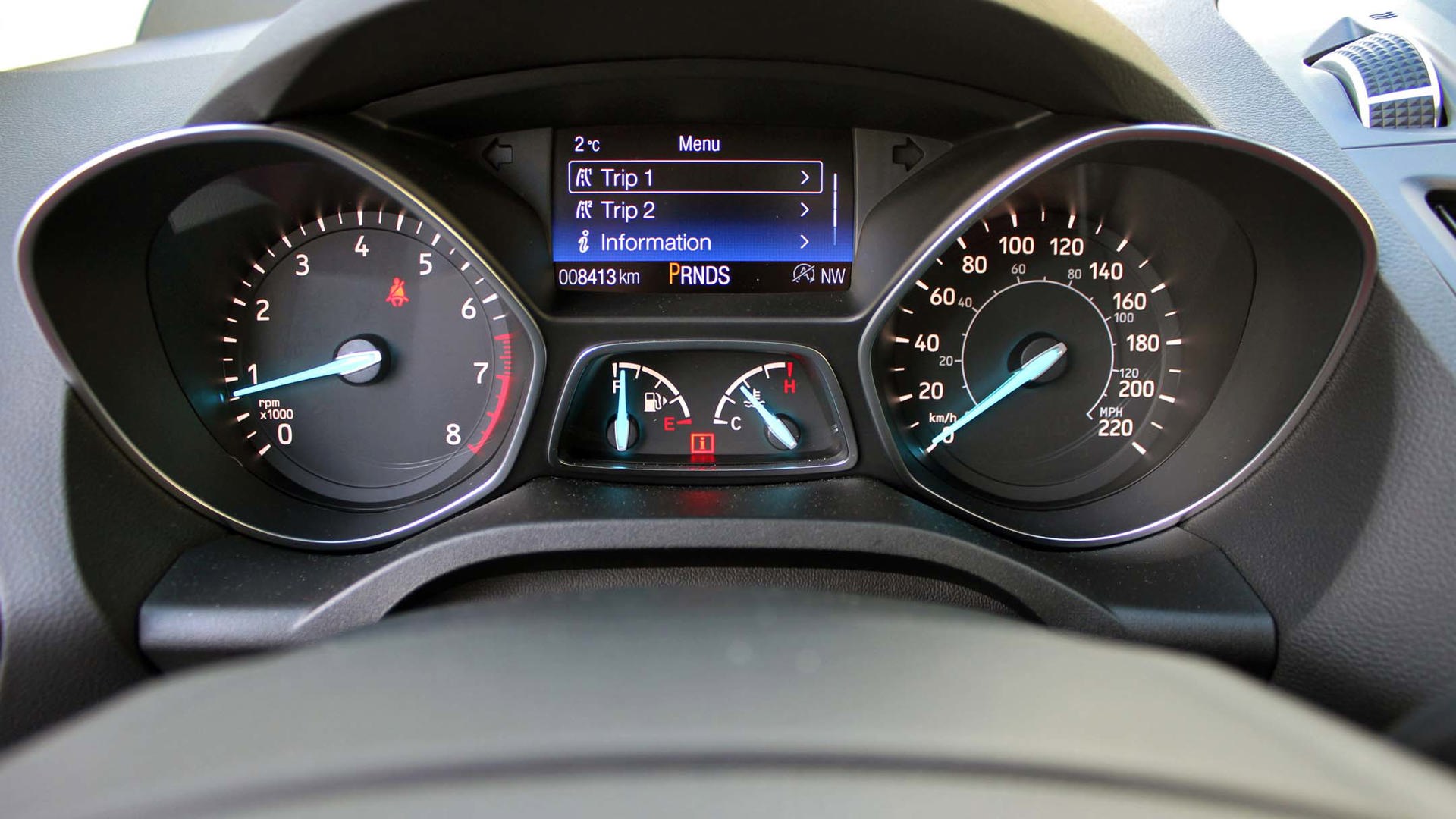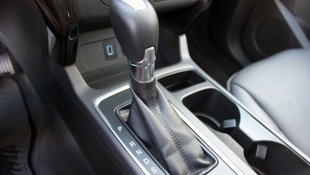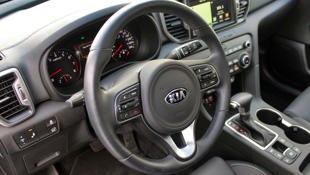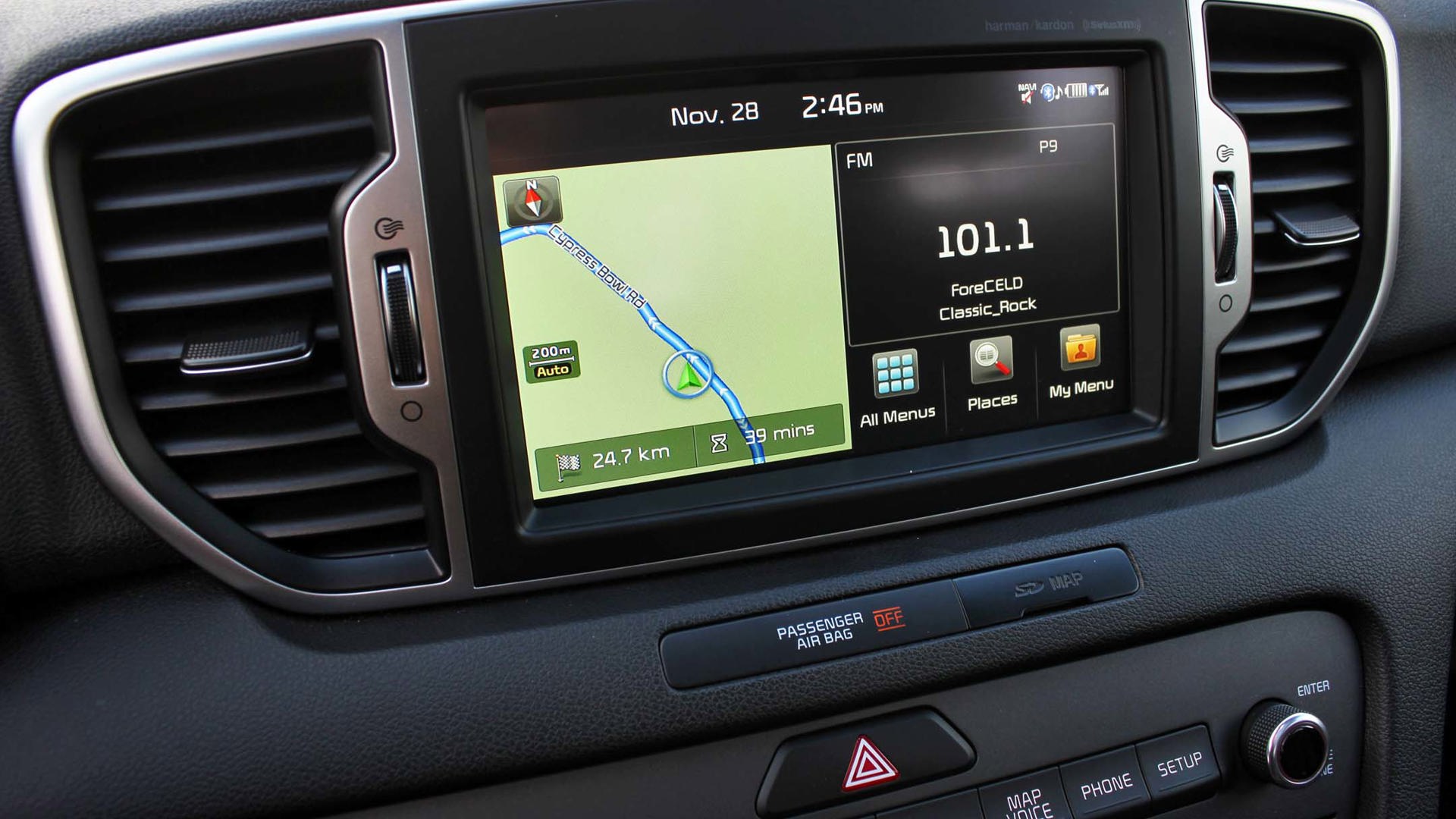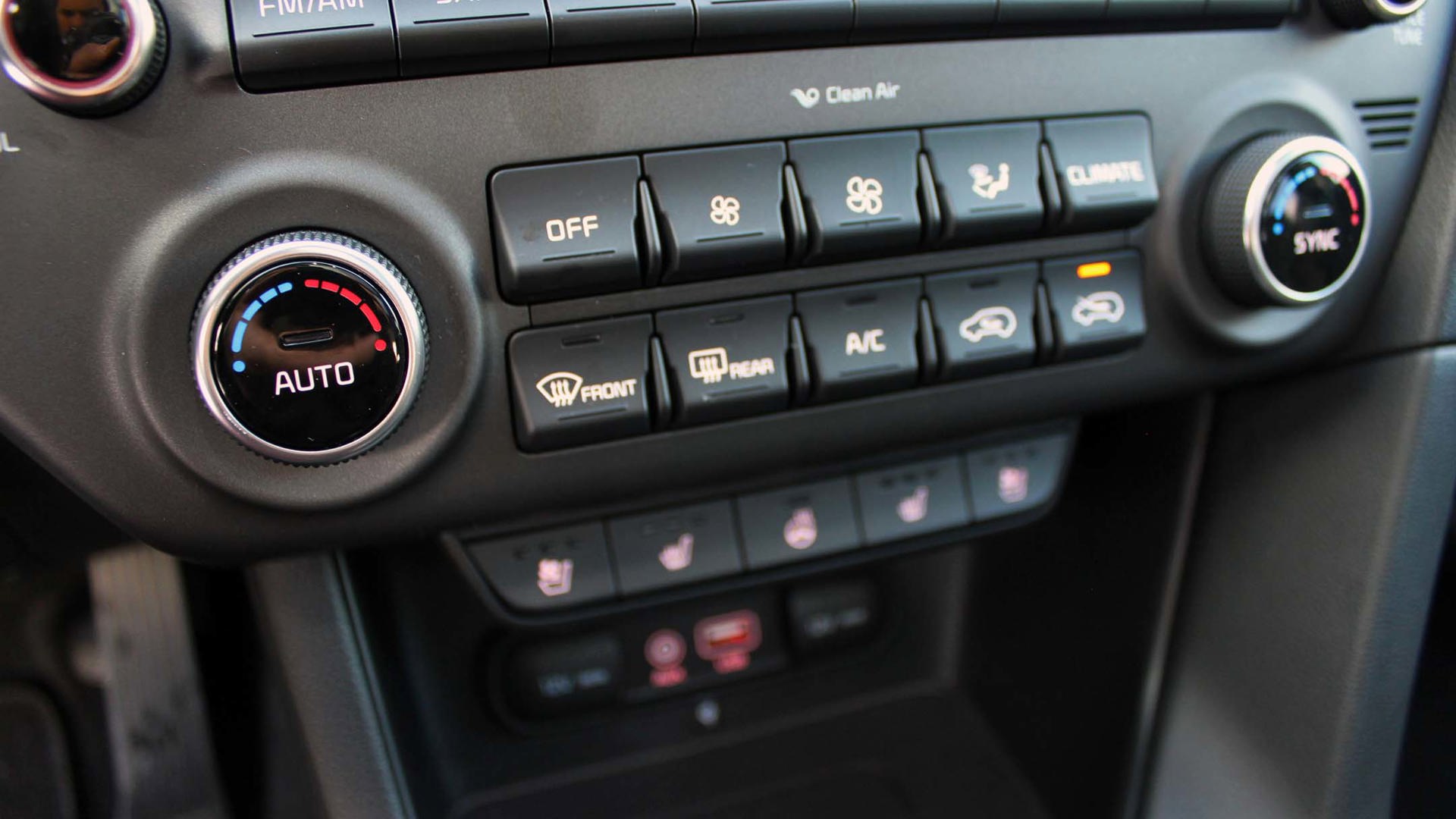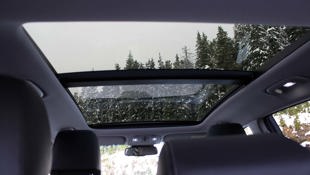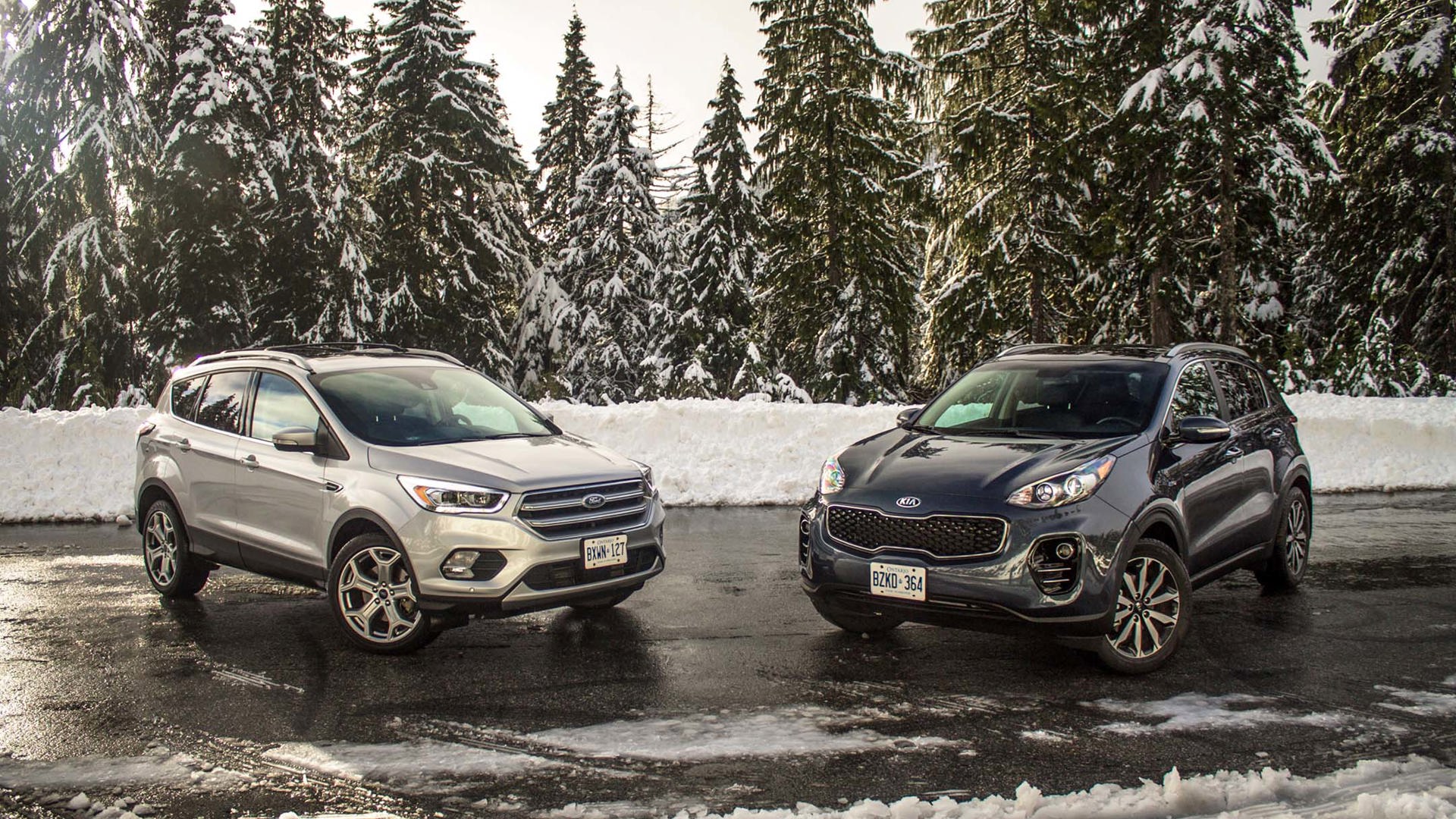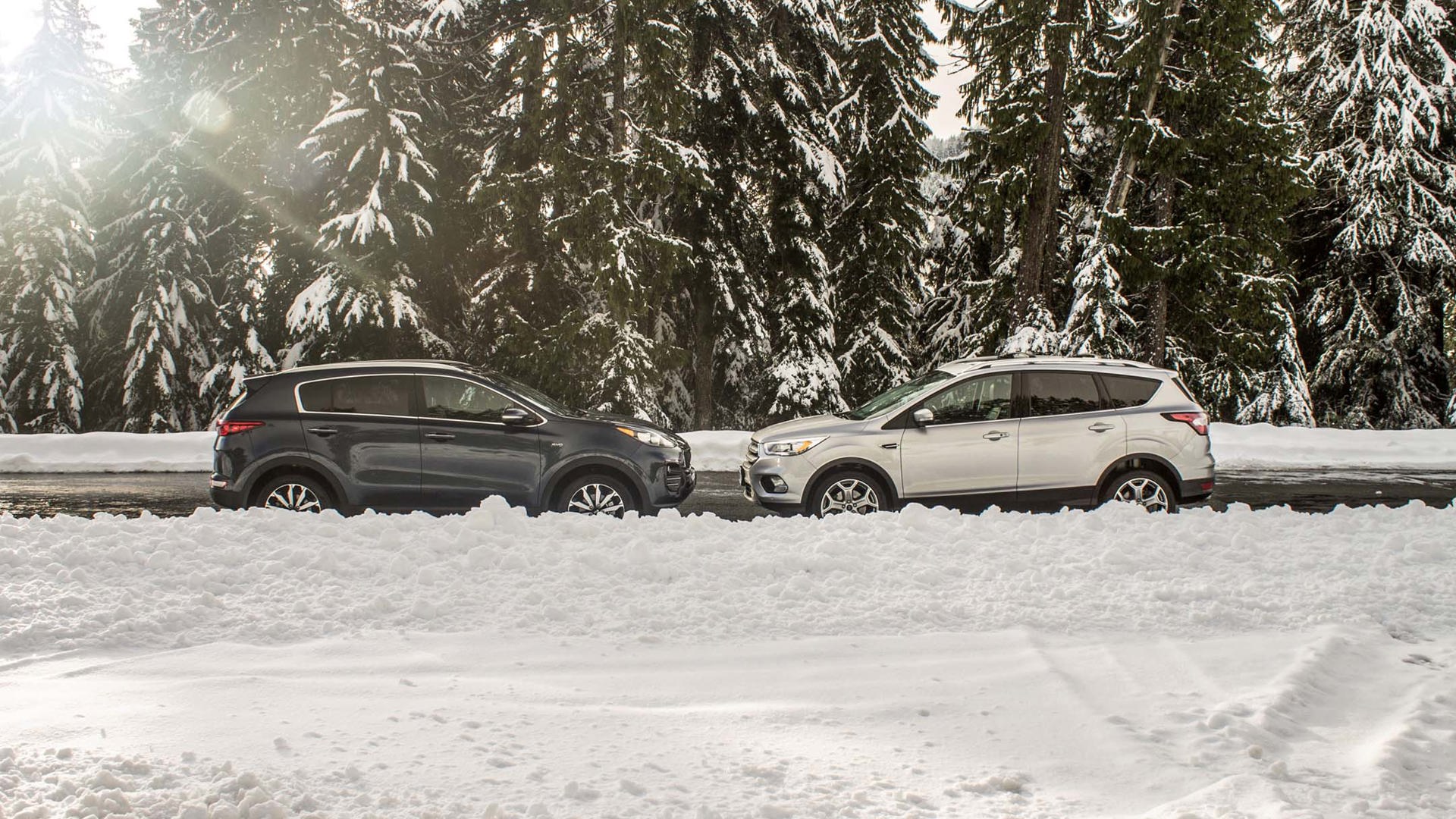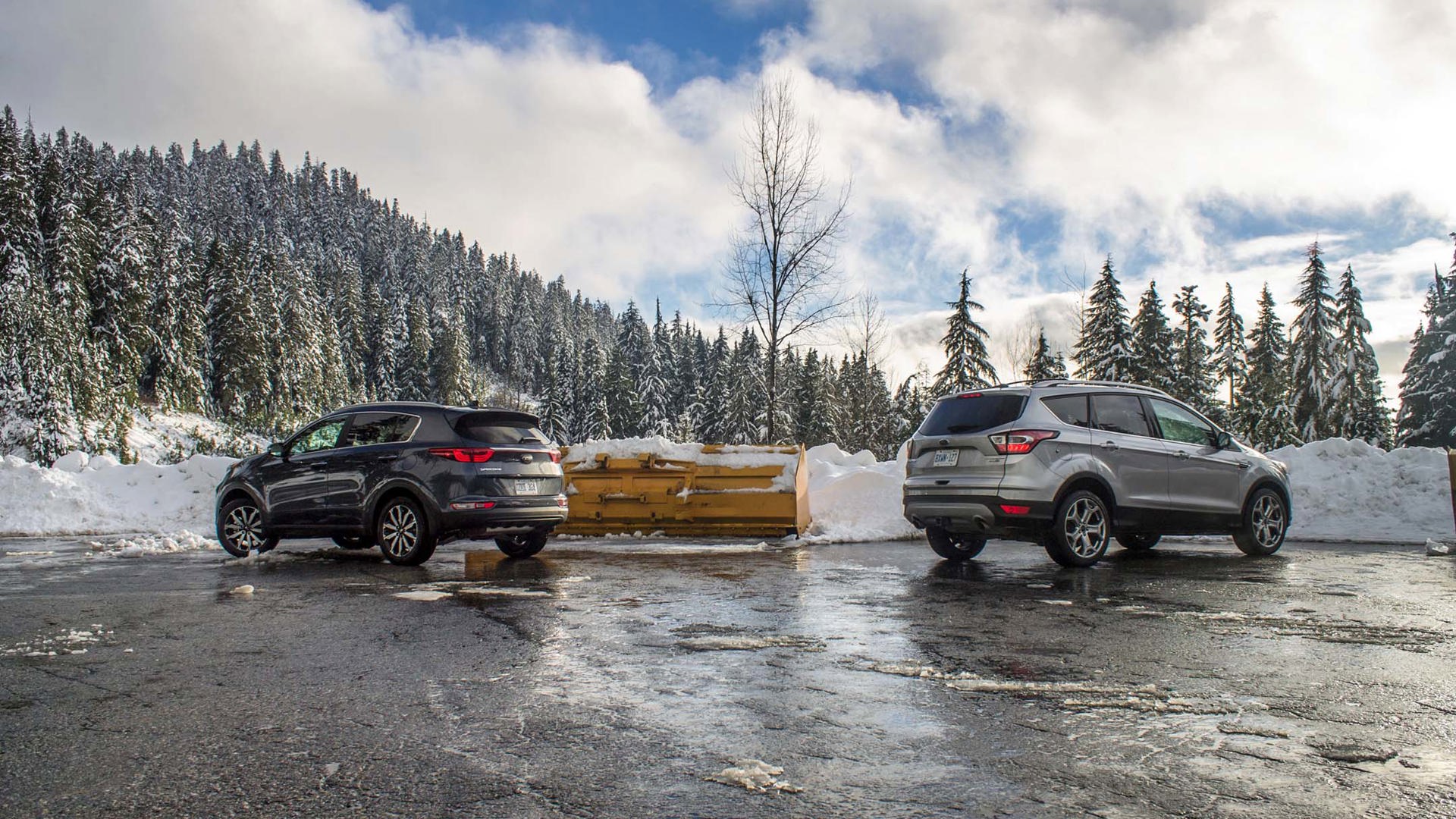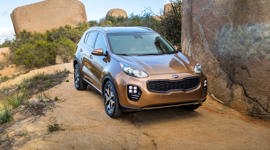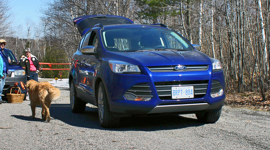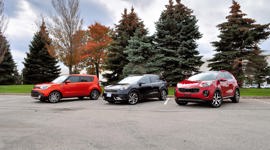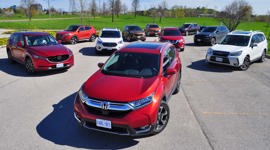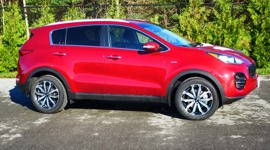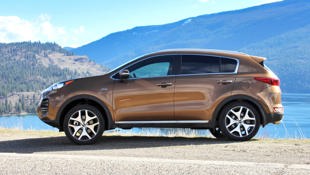Comparison Data
|
2017 Ford Escape Titanium
|
2017 Kia Sportage EX Tech AWD
|
|---|---|
|
Engine Displacement
2.0L
|
2.4L
|
|
Engine Cylinders
4
|
4
|
|
Peak Horsepower
245 @ 5,500 rpm
|
181 @ 6,000 rpm
|
|
Peak Torque
275 @ 3,000 rpm
|
175 @ 4,000 rpm
|
|
Fuel Economy
11.3/9.5 (L/100 km, cty/hwy)
|
11.5/8.7 (L/100 km, cty/hwy)
|
|
Cargo Space
868/1,703 L
|
964/1,925 L
|
|
Base Price
$35,899
|
$37,195
|
|
A/C Tax
$100
|
$100
|
|
Destination Fee
$1,690
|
$1,665
|
|
Price as Tested
$44,239
|
$39,160
|
|
Optional Equipment
$6,550 – Titanium Technology Package (Auto high-beam headlights, Bi-Xenon HID headlights, active lane keep assist, rain-sensing wipers, active park assist) $1,750; all-weather floor mats $150; adaptive cruise control $1,350; class II trailer tow prep $500; black roof rails $150; Canadian Touring package (twin panel moonroof, navigation) $2,000; 19” wheels $650
|
$200 – Premium Paint $200
|
Both the 2017 Kia Sportage and 2017 Ford Escape have been comprehensively updated for this model year, adding new styling, more room and more available features.
Can the plucky little Sportage steal a few sales away from the perennial top-10 Canadian sales champ Escape?
Of course, with vehicles like this, you don’t want to change too much. They’re massive sellers – especially in Canada – for both companies, and when you’ve developed that kind of brand loyalty, you need to walk the fine line between keeping your customer base happy and upping your customer conquest figures. As a result, you won’t have any trouble recognizing either of these as anything but the latest model in two high-selling model ranges, though they’ve both been given a nip here and a tuck there to keep with the times.
Brendan says
Indeed, a winning sales recipe isn’t something you want to fiddle with much. However, we’re not comparing these two to their previous iterations, but to each other. Can the plucky little Sportage steal a few sales away from the perennial top-10 Canadian sales champ Escape?
Styling
Dan says:
The Sportage is interesting in that it sports two very distinct front fasciae depending on which trim you select: the optional ice-cube foglights whose design may be the most distinct on the market today… and our car didn’t have them. As a result, ours is a little more traditional-looking. The traditionalists will likely be perfectly happy with the single bulb treatment found on our car, while someone who wants to make a bit more of a statement will go the other way. I think I’m in the former camp; the ice-cube fogs work well on the Sorento – where they don’t take up so much real estate up front – but on the Sportage, they’re a little too dominant, making the brand’s patented “Sharknose” grille seem almost apologetic. That changes a little on the Turbocharged SX model, however, as it gets a bigger grille for better cooling.
The rest of the Sportage’s styling package is just fine: the way the wheels are pushed neatly to each corner makes for a more athletic look overall, while the subtle roof spoiler and the two-tone rims on our tester are nice details that add a little youth, a little rambunctiousness to the Sportage as a whole.
The Escape is the more subtle of the two cars, especially in Titanium trim as seen here; sport models get a blacked out grille and wheels, while the Titanium makes do with a more traditional silver grille and wheels. When the Escape got re-designed for 2017, both the taillight and headlight lenses were made a little smaller, a little less in-your-face. The effect is a good one, managing to appear classy and athletic all at the same time, where the Sportage leans more heavily to the former. It’s a good thing, as in this day and age vehicles look too similar all too often, what with the need to meet certain aerodynamic and crash requirements. With these two, you’ve got two very distinct styles that do well to represent their brands: the up-and-comer – yes, it still falls into that category – with Kia, and the wily vet in the Ford.
That is, of course, until you look inside. Then, both cars flip the script, with the Escape displaying a far more modern and, dare I say, aggressive face.
The centerpiece of the change is the Escape’s centre stack, whose tapered look and vertical vents flanking either side is a far more swoopy and shaped affair than the item found in the Sportage. With the latter, it’s all straight edges and nearly right angles; it also gets a pair of vents either side of the main display screen, but they’re much more upright and traditionally shaped than the items found in the Escape. The same goes for the lower part of the centre console around the climate controls; it may as well be a rectangle in the Sportage, while the item in the Escape is a nicely tapering affair.
What’s funny is that in some ways, the Escape is even less adventurous than it was the last time around; the steering wheel in our ’17 model, for example, is no longer the mishmash of angles and buttons it once was. There are still the buttons for your usual controls (cruise, menu navigation, phone, etc.) but they’re more clearly laid out now, and easier to operate. The steering wheel found in the Kia sings a similar tune to the rest of its cockpit; basic three-spoke layout, buttons on either side of the hub, done. I am a fan of its chunky rim, however, as well as the thumb grips at the 10 and 2 o’clock positions. It’s actually nicer to hold on to than the Ford’s is.
While both vehicles have pretty good dash layout and all, I do have a couple of quibbles mainly with the Escape. The two main issues are the way the centre vent controls sit so far atop the dash that they’re hard to reach, whether you’re a small driver or a long-legged one like myself. For me, I’ve got to push the seat back, meaning the vent controls fall even further away. If you’re shorter, they’re far away in the first place, even if you do move the seat up.
The second issue is a little more serious, and that’s how deeply recessed the infotainment screen is. It makes the buttons at the base of the screen – this is SYNC3, so those are important, as we’ll see later on – very hard to reach, and actually blocks part of the screen from view. That’s no good.
The Kia, for its part, suffers none of these problems, thanks mainly to its simpler dash layout. As a result, I’d think I’d find the Kia easier to live with.
Brendan says:
Dan’s touched on the Ford’s wonky touchscreen placement, which we’ll get to in a moment. In the meantime, my take on these two is a preference for the Ford’s simple styling. The Sportage doesn’t quite manage to look as anonymously handsome as its big-brother Sorento, nor as semi-Germanic as the Forte5 hatchback. Our Titanium level Escape looks good enough here, but I’ll bet Ford is moving more than a few of its new Sport appearance package, with 19s and a rear spoiler.
Performance and Handling
Brendan says:
The Sportage arrives in this comparison with one door tied behind its back. While the top-level Escape automatically comes with the 2.0L turbocharged four-cylinder that’s the most powerful option in its model lineup, the Kia comes with a much less powerful 2.4L.
Giving up sixty-odd horsepower to the Ford’s 245 hp family rocket, the Kia’s 181 hp four is nonetheless adequate to the task at hand. Passing power is fine for most applications, and the six-speed automatic is up to the task. Further, if you want more power, there’s always the SX model, with its 237 hp turbo-four.
However, for the moment our Escape really gives the naturally aspirated Sportage a kicking on the tarmac. It’s not so much the horsepower difference, but the torque: the Escape has a towering 275 lb-ft of boosted grunt on offer, the Sportage 100 lb-ft less. Ascending to the slopes of a local ski hill, the difference was more than notable.
Even without the power, the Escape is a great-handling little crossover. Much of what is good about the Ford Focus is baked right into its chassis. If the Focus RS is the wildest hot hatch on the market today, then the Escape feels at least distantly related. It is Ned Flanders on the ski slope: sensible, but surprisingly swift. Stupid sexy Flanders.
But let us not dismiss the Sportage out of hand. Compared to less-sporting fare like the RAV4 or the Honda CR-V, the Sportage is actually a sharp-handling little machine. Its steering lacks much in the way of feedback, but body roll is relatively composed, and the ride is pretty taut. If you live someplace with very rough roads, the latter is possibly a drawback, but for tarmac in average condition, the Sportage didn’t give up much to the more powerful Escape.
Dan says:
You have to like what Ford is doing with their turbocharged EcoBoost engines. One litre, two litres, 2.7, 3.5 – doesn’t matter. They’re smooth, responsive and manage to provide that turbocharged grunt without as many of the turbocharged foibles we’ve gotten to know: turbo lag, required premium fuel and so on (although Ford does recommend premium for some, including our tester). They’ve taken the move to turbocharging very seriously, and are churning out some mighty fine product as a result.
Take our tester, for example. Powered by the highest-power
engine you can get in an Escape (245 hp, 275 lb-ft of torque), it piles on speed at rates you would never have expected from compact crossovers of old, and so smoothly (and quietly) that you have to watch those deeply recessed gauges closely lest you venture into speeding territory. The situation isn’t helped by the ride, which is so smooth and insulating that you make fast progress in a very serene manner.
The Sportage adds a little more noise to the proceedings, in that you do have to wring the naturally aspirated four-banger out a little more often, with peak torque arriving later in the rev band. It does weigh less than does the Escape, though, so it makes up a few points there when it comes to performance.
It can also go toe-to-toe with the Escape in the handling department: steering response is on-point (almost a little nervous at times), making left-to-right transitions snappy and easy. As the roads got more twisty, I found the Sportage to be the better, more confidence-inspiring dance partner as the Escape’s smoothness-above-all attitude can lead to a bit of a disconnect between driver and vehicle.
I wouldn’t call the steering of either vehicle to be a deal-breaker or -maker, but if you do want a more sporty, involved ride, I’d have to say that the Sportage – it does have “sport” in its name, after all – is the way to go, even with the lower power it makes in either naturally aspirated or turbo form. If crossing country in the most comfortable and drama-free way is your goal, however, I have to hand it to the Escape.
Comfort
Dan says:
As we talked about earlier, the way Ford has aligned some of the Escape’s controls make them hard to reach, and as a result, it’s a little easier to find a good seating position in the Kia. There’s technically a little more front legroom in the Escape than there is in the Sportage – 1,096 mm plays 1,053 mm – but I found the Sportage to be more comfortable for my frame, thanks to the angles of both the steering wheel and the seat. It’s also easier to see out of the Sportage thanks to a larger rear window and door mirrors. It’s a close call, though, but the Sportage gets the edge, especially when you consider the whole centre stack issue.
The back seat is less of a contest; there’s more head- and legroom in the Sportage than there is in the Escape, and unlike the front seat situation, you can really feel the extra space in the Sportage. I had no trouble sitting behind the driver’s seat, and when the centre armrest is deployed, it doesn’t dig into your sides as much as the item found in the Escape.
The extra room back there also means that the second-row seats are easier to fold than they are in the Escape. In the former, you have to first tilt the headrest on your own so it clears the front seatback, then tilt the seatback itself. In the Sportage, it’s just one singular action. There is a little more room in the Escape whether the seats are up or down, however. The Sportage gets an adjustable floor, though, making taller items easier to haul if needed.
Of note in the Escape is how they’ve changed the shifter position to add extra storage bins at the base of the centre stack, as well as a supplemental bin ahead of the cup holders that’s perfect for cell phone storage. It’s also got a nifty two-stage storage bin in the front armrest that features a shallower shelf for items like wallets and change, and a deeper main bin for everything else. The Kia’s is a more standard single-cubby affair.
Tech
Brendan says:
Ford’s latest updates to the Sync system have turned a touchscreen ugly duckling into an infotainment swan. There are better-looking systems in the luxury brand sphere, but Sync3 is quick, functional, and easy to use.
However, so too is Kia’s UVO infotainment quick and easy to use, and it has a distinct advantage over the Ford: you can see the whole screen. The Escape’s funky dashboard causes the touchscreen to be recessed to the point that the driver loses the bottom corner of the screen – just enough to turn the audio button into a “dio” button.
The Sportage’s much plainer-looking dash simply puts the screen where you can reach it. It’s not as visually exciting, but it works better.
When it comes to driver’s aids, our Technology package Escape has an ace up its sleeve that’s as much of a trump card as its turbocharged engine. Adding automatic high-beams, active lane-keeping, and automatic parking assist, the Escape thus runs away in the bells and whistles department. Our tester also had an optional adaptive cruise control to complete the suite.
However, don’t write the Sportage off just yet. It’s a tech package car too, giving it must-haves like directional headlights and a smart rear liftgate. Its Harman Kardon sound system is also very good.
Simply put, the Escape does come with a few more available gee-whiz items, but you have to pony up for them. Which brings us to...
Value
Dan says:
The Sportage EX Tech AWD – seen here – actually starts at a little higher than the Escape Titanium by about $2,000. You do get a handsome feature set with your money, however, including heated and cooled front seats, heated rear seats (these aren’t even an option on the Escape), navigation, headlights that swivel as you steer and premium Harman Kardon audio. That’s a whole heck of a lot of kit, but because of the way Kia works, there isn’t much room to move within that. You have to take one to get the other, as they don’t tend to do individual options or even option packages. Some people miss the flexibility, while others like how easy that makes it to shop for any given Kia.
The Escape’s spec sheet, by comparison, looks like a shopping list. A Costco shopping list for a five-person family, in fact. Adaptive cruise control, roof rails, moonroof, 19-inch wheels… it goes on and on, eventually rounding out on our car at $42,549 before delivery, a clean five grand over the Kia.
The Escape does have that engine, though, which is a big plus for it. Thing is, you can turbo your Sportage for just $2,400 over the cost of our tester, which still keeps it under the eventual cost of the Escape Titanium. What about these two, though? Do the Kia’s features and pricing help erase the fact that it’s a whole lot less powerful than this particular Ford? That’s the decision buyers are going to have to make.
Conclusion
Dan says:
As for me, as much as I love the way the Escape drives, there’s a lot to like about this plucky little Kia. The features it has, the roomy interior and yes, even its looks are all worthy reasons to give the Kia a fighting chance over the Escape, a perennial bestseller in this ultra-competitive segment. Add a turbo engine to the Sportage, and the decision is a slam dunk for me: I’m going Kia. The EX-Tech versus the Platinum? That’s harder, but I just think the Kia has more to offer. It wins this comparo for me, by the tip of its sharknose.
Brendan says:
While I’ll place a temporary crown on the Sportage here as well – at least until the next round of updates – I’m coming at it from a different angle than Dan. For me, the Sportage doesn’t pip the Escape when you get it with the bigger turbo engine, it’s in the mid-grade volume trims that I think it betters the Ford. It’s more comfortable, it’s going to return better real-world fuel economy with a naturally aspirated four-cylinder as opposed to the Escape’s Ecoboost options, and the simple feature packaging makes it easy for buyers to get a nicely equipped Sportage with the right options. The Escape is still probably the proverbial driver’s choice, but as a value-packed apres-ski, the Sportage has the edge.

